An Essay On The History Of Banking
stack.jones
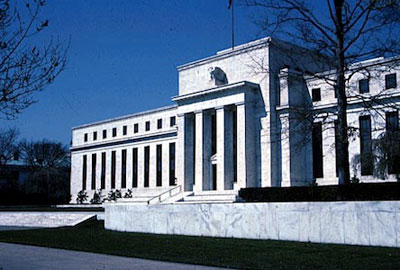 (Editor's Note: I came across the following essay which was written by stack.jones. No biographical information was provided for the author. I can say, however, that my nineteen plus years of research into the banking industry has provided me with with a comprehensive and substantial knowledge of the subject. I fully endorse everything contained in the article. It would behoove all patriots to familiarize themselves with this information. - JSB) (Editor's Note: I came across the following essay which was written by stack.jones. No biographical information was provided for the author. I can say, however, that my nineteen plus years of research into the banking industry has provided me with with a comprehensive and substantial knowledge of the subject. I fully endorse everything contained in the article. It would behoove all patriots to familiarize themselves with this information. - JSB)
In 1913, the U.S. Congress passed a bill called the Federal Reserve Act. This bill allowed an independent, non-government group to privatize, and take control of America’s monetary system. The Federal Reserve Bank’s name was chosen by this group so as to deceive the American people into believing that the Federal Reserve was a branch of the U.S. government. This privately held monopoly continues even today to give enormous power to a handful of international bankers, non-Americans, to issue America’s money, to set interest rates, to finance endless wars, and to enslave the American citizens, and the other nations of the world in a state of perpetual debt. This debt based monetary system is what has destroyed the American economy, and has brought with it depressions, and recessions for several generations. This will continue, until the Federal Reserve, and the fractional reserve lending practices of the centralized banks ceases to exist.
Facts About the Federal Reserve
- The Federal Reserve is a privately owned for profit corporation.
- The Federal Reserve has no reserves.
- The name was created prior to the Federal Reserve Act, which was passed in 1913. This was done to make Americans believe the U.S. banking system operated in the public interest. The Federal Reserve is a private bank owned by private shareholders, and runs purely for private profits. The result has been the creation of a debt based monopoly that must be paid for by the American tax payer. As of this writing, the U.S. national debt is nearly twenty trillion dollars. See: The U.S. Debt Clock for an update as to how much this debt has ballooned.
- This privately held business pays no taxes on the trillions of dollars it makes.
The Federal Reserve was chartered by an act of deceit, when most of congress had gone home for Christmas holiday, on December 23rd, 1913. The Federal Reserve Act of 1913, had passed the house, but it was having difficulty getting through the senate. Regardless, no recess had been called, while nearly every senator had gone home. Only three senators passed the act with a unanimous vote of 3-0. There were no objections. If there had been one person present in the absence of a quorum, the bill would not have passed.
In 1923, Representative Charles A. Lindbergh, a Republican from Minnesota, and father of the famous aviator “Lucky” Lindberg stated,
“The financial system has been turned over to the Federal Reserve Board. That board administers the finance system by authority of a purely profiteering group. The system is private, conducted for the sole purpose of obtaining the greatest possible profits from the use of other people’s money.”
Former chairman of the House Banking, and Currency Committee, during the great depression era, Louis T. McFadden stated in 1932,
“We have in this country one of the most corrupt institutions the world has ever known. I refer to the Federal Reserve Board. This evil institution has impoverished the people of the United States, and has practically bankrupted our Government. It has done this through the corrupt practices of the moneyed vultures who control it.”
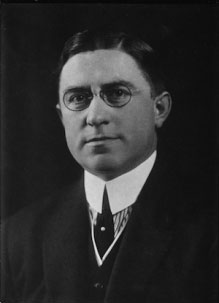
Rep. Louis T. McFadden (1876-1936).
Rep. McFadden also stated,
“When the Federal Reserve Act was passed, the people of these United States did not perceive that a world banking system was being set up here. A super-state controlled by international bankers, and industrialists acting together to enslave the world. Every effort has been made by the Fed to conceal its powers, but the truth is it has usurped the government.”
Those same bankers used concerted efforts to malign McFadden. McFadden lost his congressional seat in 1934. Even so, he remained in the public eye as a vigorous opponent of the financial system, until his death, which occurred on October 3rd, 1936. Prior to his death, there had been two attempts on McFadden’s life. The first was when McFadden dodged two bullets fired at him at close range. The second attempt was when McFadden was poisoned at a banquet. McFadden was in New York City visiting his wife, and son in September 1936, when he was taken ill at his hotel and died of coronary thrombosis. The circumstances around his death remains suspicious. The result of McFadden’s death was the most outspoken, and articulate critic of the Federal Reserve being silenced forever.
Senator Barry Goldwater, was a frequent critic of the Federal Reserve,
“Most Americans have no real understanding of the operation of the international moneylenders. The accounts of the Federal Reserve System have never been audited. It operates outside the control of Congress and manipulates the credit of the United States.”
Thomas Jefferson wrote,
“I sincerely believe that banking institutions are more dangerous to our liberties than standing armies. The issuing power should be taken from the banks, and restored to the people to whom it properly belongs.”
James Madison, the main author of the U.S. Constitution wrote,
“History records that the money changers have used every form of abuse, intrigue, deceit, and violent means possible to maintain their control over governments by controlling money and its issuance.”
The Federal Reserve is now the most powerful privately owned central bank in the world. However, it was not the first.
II. The Money Changers
Money changers are those that lend money at excessive fees, and manipulate the quantity of money available to the public. Approximately two thousand years ago, Jesus threw the money changers out of the temple of Jerusalem for corrupting Judaism. It it said that this was the only time he resorted to the use of force during his entire ministry. This would be the crime that he would be charged with that resulted in his execution by crucifixion.
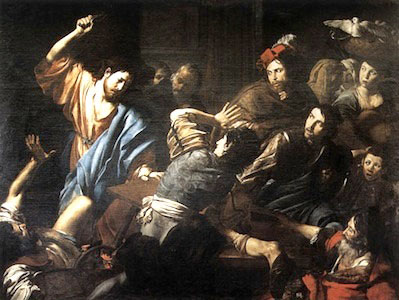
Jesus attacking the money changers at a temple in Jerusalem.
As part of the Hebrews religious practices it was imposed upon them to go to their local place of worship, and pay a temple tax. This tax could only be paid with a special coin, the half shekel of the sanctuary, which was one half ounce of pure silver. The half shekel was the only coin issued that was pure silver, and didn’t have an image of an emperor upon it. In Judaism, the half shekel was the only coin considered acceptable by god.
The half shekels were not plentiful. The money changers cornered the market on the coins, and like any other commodity, the religious leaders raised the price to whatever the market would bare. The money changers made huge profits because they held a monopoly on the only money available as part of the Hebrew’s religious practices. The Hebrews had to pay whatever the money changers demanded. To Jesus this was an abomination that violated the sanctity of god’s house.
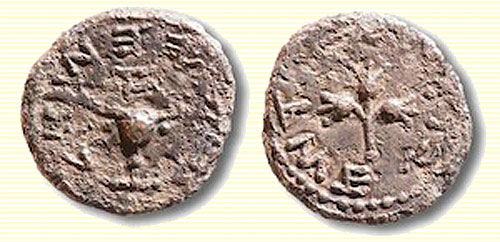
Half-Shekel used to monopolize the payment of temple taxes.
The money changing scam did not originate in Jesus’ time. Two hundred years before Christ, Rome was having trouble with money changers. Two early Roman emperors tried to diminish the power of the money changers by reforming usury laws, and limiting land ownership to 500 acres. Both emperors were assassinated. In 48 B.C., Julius Caesar took back the power to coin money from the money changers, and minted coins for the benefit of all. With this new, and plentiful supply of money, Caesar was able to construct great public works projects. By making money plentiful Caesar won the loyalty, and admiration of the common man, but the money changers hated him. Economic experts believe this was an important factor in Caesar’s assassination. Along with the death of Caesar came the demise of plentiful money in Rome. Taxes increased, and so did political corruption. Just as in America today, usury, and valueless coins became the rule, resulting in the steady devaluation of the U.S. monetary supply.
Over time Rome’s money supply was reduced by 90%. This resulted in common people losing their land, and their homes, and enslavement, just as it has happened throughout European history, as well as in the U.S. Most recently millions of Americans lost their homes during the 2007 financial crisis, which resulted in a worldwide economic depression, which still exists as of this writing. It must be noted that Goldman Sachs controlled 16% of the world’s monetary market prior to this crash. Thereafter, Goldman Sachs managed to take control of approximately 72% of the entire world’s currency. If the entire world economy collapsed where Goldman Sachs controlled 16% of the world’s monetary valuation, what will be the result of the next economic crash orchestrated by money lenders such as Goldman Sachs?
As today the masses lost confidence in their government due to the demise of common money. Numerous governments were overthrown, and those in power executed. As for Rome, one of the most powerful and developed cultures that have ever existed, plunged into the dark ages.
The U.S. has followed the same corrupt political, and monetary paradigm of the Roman Empire. Time and again Americans have lost their savings, and investments, and their property. Just as in Rome, when that empire met its demise, the U.S. government has taken no action do away with the monopoly, and privatization of the U.S. currency. The inevitable is that America, as its Roman predecessor will fall from greatness.

Source: IMF 2016 analysis for projections to 2050.
III. The Goldsmiths
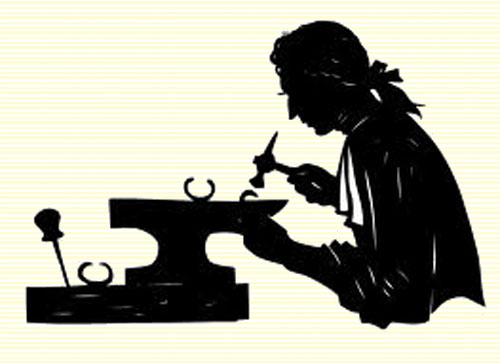
Approximately one thousand years after the death of Christ, the money changers were active in Medieval England. The goldsmiths kept other people’s gold for safe keeping in private vaults. They were so active that they could control and manipulate the entire British economy. These were not bankers per se. However, the goldsmiths were in reality the first bankers.
The first paper money originated as a receipt, as proof that gold, and silver coins were left with the goldsmith to store in their secured vaults. Over time, paper money became the norm because it was more convenient to carry paper, than to carrying sacks of heavy gold, and silver coins. The goldsmiths noticed that only a small fraction of people returned to demand their gold. Goldsmiths started cheating on the system, discovering they could print more money than they had in actual gold. The goldsmiths then loaned out that extra money, and collected interest on it, not paying any interest to depositors. This began the birth of the fractional reserve banking, which is the practice of loaning out many times more money than the assets that are available on deposit. Fractional reserve banking is the principal of lending at interest money that does not exist. This is the basis of the International Monetary Fund, and the World Bank.
A typical fractional reserve banking scheme: A goldsmith has 1000 in deposits. They draw up 10,000 in paper money, lending out 10 times more than they actually have in deposits. Goldsmiths gradually accumulated more wealth, and continued to use this criminal enterprise to accumulate more, and more gold.

It’s A Wonderful Life: The loss of an entire town’s deposits is what occurs when reckless bankers lend out more than it has on reserves.
Fractional lending is rooted in fraud, results in wide-spread poverty, and reduces the value of honest money. Yet, today every bank in the U.S. is allowed to loan out at least ten times more money than it has in reserves. This is how bankers get unjustly rich, charging interest on money they don’t actually have. The crash of Japan’s economy bubble in the 1980s was the direct result of the nations banks having nearly no reserves. It was discovered that some of Japan’s largest banks had reserves less than 2%. Prior to the bubble bursting, Japanese bankers were called to the headquarters of the IMF for a special meeting. At that meeting Japanese officials were told to bring their reserves up to 10% requirement, or face removal from World Bank membership, and monetary valuation controlled by the IMF.
In the middle ages Cannon Law of the Catholic Church forbade charging interest on loans. Usury was also illegal. This followed the teachings of Aristotle, and Saint Thomas Aquinas. The philosophy was that the purpose of money was to serve members of society, and to facilitate goods needed to lead a virtuous life. Interest was considered an unnecessary burden on the use of money, contrary to reason, and justice.
Europe followed the Cannon Laws of the Church, forbidding the charging of interest, making it a criminal offense. Lawmakers passed legislation known as Usury Laws. However, as commerce, and opportunity for investment arose in the late middle ages, it came to be recognized that lenders had risk in lending, and could lose opportunities for investments. Some fees related to lending began to be permitted, but charging interest still remained a crime. All moralists condemned fraud, oppression of the poor, and injustices that arose due to corrupt usury practices.
Ancient goldsmiths discovered that extra profits could be made by growing the economy between easy money, and tight money. When goldsmiths made money easy to borrow, money in circulation expanded, and people took out more loans to expand their businesses. Money changers would then tighten the money supply, and make money difficult to obtain. Goldsmiths knew that certain borrowers would not be able to repay loan debts. Goldsmiths would not allow these “loan defaulters” to take out new loans to repay the old ones. This led to bankruptcy, ruin, and the selling off of assets to goldsmiths for pennies on the dollar. The same criminal enterprise of usury lending, tightening the money supply, defaulting on loans, and property confiscation still occurs. Today economists call this “the business cycle.”
IV. King Henry I Of England: The Tally Sticks
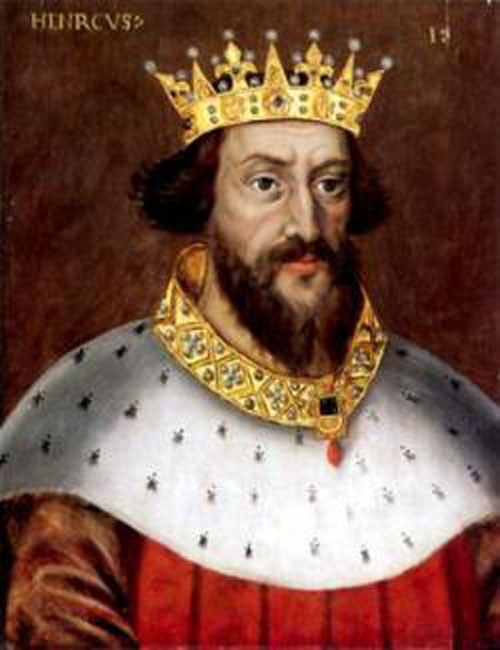
King Henry I of England, father of the Tally Sticks.
The British Empire, which had been one of the most powerful nations in the world, was built on the Tally Stick System. Tally sticks were used to keep bankers from seizing control of the monetary system of England.
Around 1100 AD, King Henry I decided to take the power of money away from the lenders. King Henry I invented one of the most unusual money systems in history. It was known as the Tally Stick System. This system lasted until 1826. The Tally System was adopted to avoid the monetary manipulation of the goldsmiths. Tally Sticks were merely sticks of wood with notches cut on one edge of the stick to indicate denominations. Then the stick was split lengthwise so that both pieces retained a record of the notches. The king kept one half of a tally stick to protect against counterfeiting. The other half would be spent into the economy, and circulate as money. Under this system money could not be manipulated, and it could not be stolen. No other form of money had worked as well, and for so long as Tally Sticks.
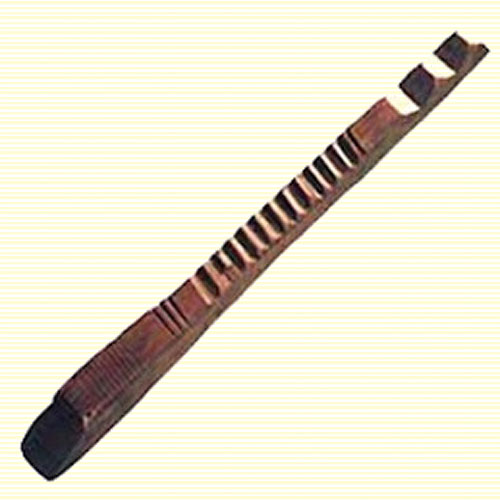
The tally stick was a system of money created by King Henry I of England.
The Bank of England was formed in 1694, and immediately attacked the Tally Stick System because it was money that was outside of the control of the money changers. Despite this attack, the tally stick remained successful for nearly two hundred more years, despite the fact that the banks had coinage as competition.
In the 1500s, King Henry VIII relaxed usury laws. The money changers made metal coins plentiful for decades to follow. But, when Queen Mary tightened the money laws on usury, the money changers renewed the hoarding of gold, and silver coins, causing the economy to plummet. When Queen Elizabeth I took to the throne, she was determined to regain control of the economy. Her solution was to introduce gold, and silver coins from the public treasury, and take away control of the money supply from the money changers.
Financed by the money changers, Oliver Cromwell overthrew King Charles, purged Parliament, and put the king to death. The money changers were then able to consolidate their financial power. For the next 50 years, the money changers plunged Great Britain into a series of costly wars. They also took over one square mile of property in the center of London. This area is still recognized today as one of the three prominent financial centers of the world.
Conflicts with the Stewart King led the money changers of Britain to combine their power and influence with the money changers of the Netherlands. This merger of corrupt financial powers financed the invasion of William of Orange, who seized the English throne in 1688, the overthrow of the Stewarts.
William of Orange was born in The Hague, as the son of William II, Prince of Orange and Mary Stuart, sister of Charles II and James VII of England. William came to power in the Netherlands during the aftermath of an occupation by French forces in 1672. William of Orange became King William III of England and of Ireland on January 22nd, 1689. He also became King William II of Scotland on April 4th, 1689, and in each case ruled as joint monarch with Mary II, until her death in December of 1694. Thereafter William ruled as a sole monarch.
V. The Bank of England

The Bank of England was established in 1694.
By the end of the 1600s, England was in financial ruin. The continuous wars with France and Holland had exhausted the nation. Frantic government officials met with the money changers and begged for the money necessary to pursue political purposes. The price was a government sanctioned, privately owned bank, which could issue money created out of nothing.
The Bank of England would be the first privately owned central bank. It was deceptively called the Bank of England, as is the U.S. Federal Reserve, to make it appear to the general population that it was a branch of the government. As any other private corporation, the bank sold shares to investors. Each investor was to put up one and a quarter million British pounds in gold coin to purchase their shares in the bank. The investors names were never revealed. However, only 750 thousand pounds was ever received. Despite this shortage, the bank was chartered in 1694, and began loaning out several times the amount of money it was supposed to have on reserve, all at interest. The new bank would lend politicians as much money as they needed, so long as those politicians secured the debt through taxation of the British people. As a result, the formation of the Bank of England became a form of legal counterfeiting of the national currency for private gain.
Unfortunately, today nearly ever nation has a privately owned central bank modeled after the fraudulent Bank of England. This form of banking takes over an entire nations economy, and is in reality a plutocracy ruled by the rich.
Nations do need a central bank. However, they do not need the banks to be privately controlled. The central bank sham is in reality a hidden tax where nations sell bonds to the central banks to pay for things politicians don’t have the political will to raise taxes to pay for. Those bonds are created by the central banks out of nothing. More money in circulation makes the money in circulation worth less. The government then obtains as much money as it needs, and the people pay for it with inflation.
VI. The Rothschild Cartel and Fraud on the Market
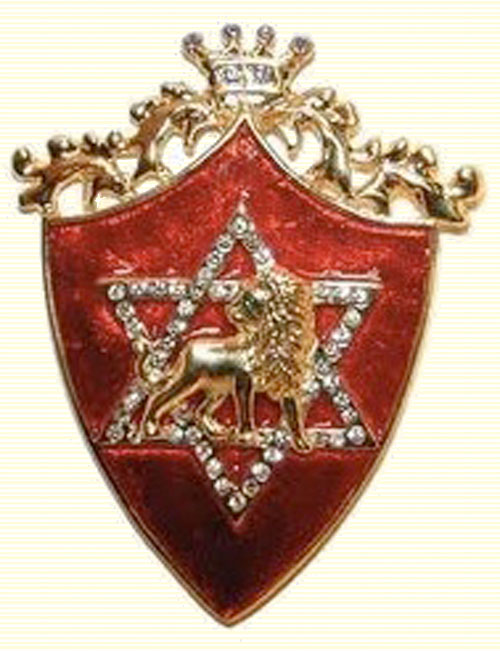
The Rothschild Red Shield.
Fifty years after the Bank of England opened its doors, a goldsmith named Anselm Moses Bauer opened a coin shop in Frankfurt Germany. Over the door of the business was a sign depicting a Roman eagle on a red shield. The shop became known as the Red Shield Firm. In the German language, Red Shield Firm translates into Rothschild.
When Amshel Mayor, Bauer’s son inherited the business he had the family name changed to Rothschild. Amshel soon learned that loaning money to governments, and kings was more profitable than loaning to private individuals. Not only were the loans larger, but they would be secured through national taxation schemes, which meant the average citizen had to pay the debt.
Amshel had four sons, and they were all trained in the skills of creating money, and finance. Amshel’s sons were sent to various destinations throughout Europe to open family owned banks. The oldest son, Amshel Mayer, remained in Frankfurt to preside over the hometown bank. The second son, Solomon, was sent to Vienna, Austria. In 1798, the third son, Nathan, was sent to London, and the fourth son, Karl, opened a bank in Naples, Italy. Finally, the the fifth son was sent to Paris, France. Germany, Austria, the UK, France and Italy would later play a significant role in the worst war this world had ever experience. Financing of that war, WWII, and its profits would be generated by the banks of the Rothchild banking cartel.
Initially, the Rothschild family, and the Schiff’s shared a house in Frankfurt. Both families would eventually play a significant role both European, and American history.
When Napoleon had forced Prince William of Hess Cassel into exile, Cassel sent 500,000 pounds to Nathan Rothschild with instructions to purchase consoles, also known as British government bonds. Nathan did not invest the money for Cassel’s interest, instead he used that money for his own purposes, which was to invest in war opportunities. When Cassel returned after the Battle of Waterloo, he summoned Rothschild, and demanded the return of his money. Rothschild paid the money, but kept the profits he had gained through usury.
By the mid 1800s, the Rothschild’s dominated European banking, and were the wealthiest family on earth. The Rothschild’s financed Cecil Rhodes making it possible for him to obtain a monopoly over the diamond, and gold fields of south Africa. In the U.S. the Rothschild’s financed the Harriman, and Vanderbilt families in railroad, and the press. The Rothschild’s also financed the industrialist Andrew Carnegie in the steel industry, the Rockefellers in oil, and many others western elites, whose families continue to play a significant role in banking, the medical and pharmaceutical industries, and the manufacturing of weaponry.
During WWI, J.P. Morgan was thought to have been the richest man in the U.S. However, not long after Morgan’s death it was discovered that he was merely a lieutenant of the Rothschild banking cartel. Once the terms of Morgan’s will had become public it was discovered that he controlled only 19% of the J.P. Morgan companies. By 1850 James Rothschild, the heir of the French Rothschild family was said to be worth 600 million French Franks. 150 million more than all of the other bankers in Europe combined.
VII. The American Revolution

An Artist’s Rendition of the American Revolution (1775-1783).
By the mid 1700s Britain had reached its height of power around the world. But, Britain had fought four costly wars since the creation of its privately owned central bank, the Bank of England, which was lending money at high interests to finance war related debts. The British parliament had borrowed heavily from the bank. By the mid 1700s government debt had ballooned to 140 million pounds, a staggering number at that time. Consequently, the British government embarked on a new taxation scheme to raise revenue on the American colonies in order to pay the interest owed to the bank. But, in the U.S., the scourge of the privately owned central bank had yet to hit the colonies.
In the U.S. there was a severe shortage of precious coins to pay for goods, so the early colonists experimented with printing their own paper money. Benjamin Franklin was a supporter of colonies printing their own money. In 1757, Franklin was sent to London where he stayed for the next seventeen years, until the start of the American Revolution. During this period, the colonies began to distribute money known as Colonial Scrip. The endeavor was successful, and provided a reliable means of exchange and helped to provide a unity between the independent colonies. The Colonial Scrip was debt free, printed in the public interest and was not backed by gold or silver coin. It was what is known as fiat currency. Fiat money is currency that a government has declared to be legal tender, but it is not backed by a physical commodity.
When officials in England asked Franklin how he could account for the prosperity of the colonies, Franklin replied,
“In the colonies we issue our own money. It is called Colonial Scrip. We issue it in proper proportion to the demands of trade, and industry to make the products pass easily from the producers to the consumers. In this manner, creating for ourselves our own paper money, we control its purchasing power, and we have no interest to pay to no one.”

American Money. Colonial scrip issued November 9th 1775.
This was common sense to Franklin but the impact it had on the Bank of England was profound. Parliament immediately passed the currency act of 1774. This prohibited colonial officials from issuing their own money and ordered them to pay all future taxes in gold or silver coins. This forced the colonies on a gold and silver standard. Franklin wrote in his autobiography, “In one year, the conditions were so reversed that the era of prosperity ended, and a depression set in, to such an extent that the streets of the Colonies were filled with unemployed.” Franklin stated this was the real cause of the American revolution. Franklin wrote, “The colonies would gladly have borne the little tax on tea and other matters had it not been that England took away from the colonies their money which created unemployment and dissatisfaction. The inability of the colonists to get power to issue their own money permanently out of the hands of George III and the international bankers was the PRIME reason for the Revolutionary War.”
By the time the first shots were fired on April 19th, 1775 the colonies were drained of gold and silver coins through British taxation. As a result the constitutional government began to print its own money to finance the war. At the start of the war the U.S. money supply was 12 million dollars. By the end of the war it was nearly 500 million. As a result the currency was virtually worthless. Shoes sold for 5000 dollars a pair. Colonial Scrip had worked because just enough was printed to facilitate trade. George Washington lamented, “A wagon load of money will scarcely purchase a wagon load of provisions.”
Today those that support a gold backed currency point to this period of the revolution to demonstrate the pitfalls of a fiat currency, but the same currency had worked so well during times of peace that the Bank of England had Parliament outlaw it.
VIII. The Bank of North America
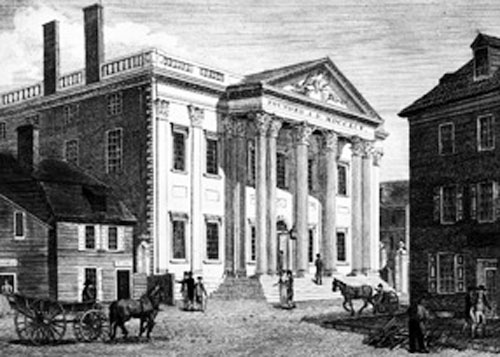
The Bank of North America was chartered December 31st, 1781.
Towards the end of the revolution, the Continental Congress met at Independence Hall in Philadelphia, so as to discover a way to raise desperately needed money. In 1771, the Continental Congress allowed Robert Morris, their financial superintendent to open a privately owned central bank. Morris was a wealthy man who had grown richer during the war through trading in war materials.
The new bank was called the Bank of North America, and was modeled after the Bank of England. The Bank of North America was allowed to practice fractional reserve banking. This meant it could lend money the bank didn’t actually have, and charge interest on it. Incidentally, if anyone other than bankers were to do that today, they would be guilty of fraud, and misrepresentation, face felony charges, and a long prison sentence. The Bank of North America’s private charter called for investors to put up an initial 400,000 dollars. Morris was unable to raise the money, so he used his political influence to have gold deposited in the bank, which had been loaned to America by France. Morris then loaned 400,000 to himself, and his friends to reinvest in shares of the bank. This private bank then obtained a monopoly over the American currency. Soon the dangers became clear, as the value of the American currency plummeted.
In 1775, the bank’s charter was not renewed, but Morris and friends had become very wealthy, and overrepresented in American politics. The leader of the effort to shut down the bank was William Findley of Pennsylvania. Findley stated,
“The institution, having no principle but that of avarice, will never be varied in its object, to engross all that wealth, power and influence of the state.”
The men behind the Bank of North America included, Alexander Hamilton, Robert Morris, and the bank’s president, Thomas Wiling. These men did not give in. Only six years later Hamilton, at that time the secretary of the treasury, and his mentor Morris, pushed a new bill through legislation for another privately owned bank. This new bank was called the First Bank of the United States. Thomas Wiling served as the banks president. The players in the fraudulent scheme against the American people remained the same. The only thing that had changed was the name of the bank.
IX. The Constitutional Convention
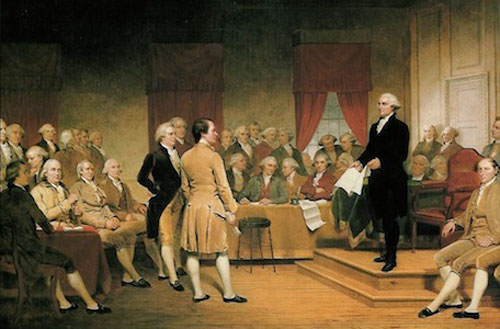
The Constitutional Convention was held in Philadelphia in 1787.
In 1787 colonial leaders assembled to replace the Articles of Confederation. Both Thomas Jefferson, and James Madison remained steadfastly unmoved toward a privately owned bank. Both had seen the problems caused by the Bank of England. Jefferson stated, “If the American people ever allow private banks to control the issue of their currency, first by inflation, then by deflation, the banks and the corporations which grow up around them will deprive the people of all property until their children wake up homeless on the continent their fathers conquered.”
During the debate over the future monetary system another one of the founding fathers, Gouvernor Morris castigated the motivations of the owners of the Bank of North America. Morris was head of the committee that wrote the final draft of the Constitution. Morris knew the motivations of the bank, as his former employer Robert Morris, and Alexander Hamilton were the ones who had presented the original plan for the Bank of North America to the Continental Congress during the last year of the revolution. In a letter Morris wrote to James Madison on July 2nd 1787, her revealed what was the true motivation of the banking cartel, “The rich will strive to establish their dominion and enslave the rest. They always did. They always will. They will have the same effect here as elsewhere, if we do not, by the power of government, keep them in their proper spheres.”
Despite the defection of Gouvernor Morris from the ranks of the banks, Hamilton, Robert Morris, Thomas Wiling and their European backers were not about to throw in the towel. They convinced the bulk of the delegates at the Constitutional Convention not to give Congress the power to issue paper money. Most of the delegates were still aware of the paper currency problems that arose during the issuance of paper currency during the revolution. The had apparently forgotten how well Paper Scrip had worked prior to the war. But, the Bank of England had not, and would not permit the Americans to print their own money. The Constitution remained silent on this matter. This defect in the monetary system in the U.S. left the door open for the money changers, just as they had planned.
X. The First Bank of the United States.
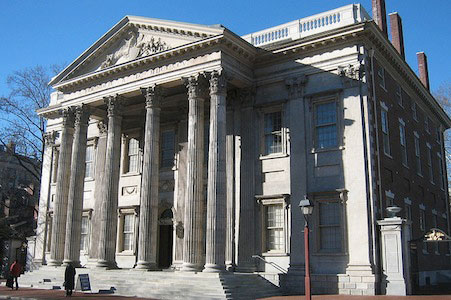
The First Bank of the United States received its twenty-year charter in 1791.
Only three years after the signing of the new constitution, the newly appointed first secretary of treasury, Alexander Hamilton proposed a bill calling for a new privately owned central bank. This bill was brought to congress in the same year Amshel Rothschild made a pronouncement from his bank in Frankfurt. “Let me issue and control a nation’s money and I care not who writes the laws.”
Alexander Hamilton was a tool for the international bankers. One of his first jobs after graduating from law school, in 1782 was as an aide to Robert Morris the head of the Bank of North America. A year before Hamilton had written a letter to Morris saying, “A national debt, if it is not too excessive will be to us a national blessing.”
Congress passed the banking bill proposed by Hamilton and gave it a twenty-year charter. The new bank was to be called, The First Bank of the United States. The bank was given a monopoly on printing U.S. currency, even though 80% of its stock was held by private investors. The other 20% was purchased by the U.S. government. The reason was not to give the government a piece of the profits, it was a scheme to provide the cash needed for the other 89% owners. As with the old Bank of North America, and the Bank of England, the stock holders never paid the full amount of their shares. The U.S. government put up the private shareholders initial two million dollars in cash, and then through fractional reserves made loans to its charter investors so they could come up with the remaining 8 million dollars needed for this risk free investment. The name of the bank was deliberately chosen to hide the fact that it was privately controlled, and like the Bank of England, the names of the private investors were never revealed. However, it was well-known that the Rothschild cartel was the driving power behind the Bank of the United States.
The bank had been presented as a way to stabilize the nations currency, and to control inflation. However, over the first five years, the U.S. government borrowed 8.5 million dollars from the Bank of the United States, and over that same five-year period, prices rose by 72%. Jefferson as the new secretary of state watched the borrowing with sadness and frustration, unable to stop it. Jefferson wrote, “I wish it were possible to obtain a single amendment to our Constitution taking from the federal government their power of borrowing.” Millions of Americans feel the same way today as they helplessly watch Congress borrow the U.S. economy into oblivion.
XI. Napoleon’s Rise to Power
The Bank of France was organized in 1800 in the same manner in the same deceitful manner the Bank of England had been. Napoleon decided France had to break free of debt. He never trusted those that controlled the Bank of France.
Napoleon declared,
“When the government relied on the bankers for money, the bankers, not the political leaders were in control of the government.” Napoleon said, “The hand that gives is above the hand that takes. Money has no motherland; financiers are without patriotism and without decency; their sole object is gain.”

Napoleon Emperor of France (1769-1821).
Back in the states, Thomas Jefferson narrowly defeated John Adams to become the third president of the U.S. BY 1803, Jefferson and Napoleon had struck a deal. The U.S. would give Napoleon three million dollars in gold in exchange for a huge piece of land west of the Mississippi River. That deal was known as the Louisiana Purchase. With that money, Napoleon forged an army, and set off to conquer Europe. The Bank of England quickly rose to oppose Napoleon, financing every nation in his path reaping enormous war profits. Prussia, Austria and Russia all went into debt in a futile attempt to stop Napoleon. Four years later with the French army in Russia, Nathan Rothschild personally took charge to smuggle a supply of gold through France to finance, an attack on France by the Duke of Wellington from Spain. Wellington’s attack from the south, and other defeats eventually caused Napoleon to abdicate, and Louis XVIII was crowned king. Napoleon was exiled to Alba, a tiny island off the coast of Italy. While in exile, and temporarily defeated by England through the financial support of the Rothschild Cartel, America continued to break free of its privatized central banking system as well.
XII. The End of the First Bank of the United States
In 1811 a bill was given to Congress to renew, The Bank of the U.S. The debate was heated, and representatives of Pennsylvania, and Virginia passed resolutions asking Congress to abolish the bank. The press at that time openly called the bank a swindle, a vulture, a viper and a cobra. A congressman named P.B. Porter attacked the bank from the floor saying, “If the bank’s charter was renewed congress would have planted in the bosom of this constitution a viper, which one day or another would sting the liberty of this country to the heart.”
Nathan Rothschild warned that the U.S. would find itself involved in a most disastrous war if the banks charter were not renewed. The renewal bill was defeated by a single vote in the house, and was deadlocked in the senate. At that time America’s fourth president was in the Whitehouse, James Madison. Madison, like Jefferson was a staunch opponent of the bank, his vice president George Clinton broke the tie in the senate, and sent the bank into oblivion. Within five months, England attacked the U.S., and the War of 1812 was on. At that time, the British were still battling Napoleon, so the U.S. war ended in a draw in 1814. The money changers were down, but they were far from out. It would take merely two years to bring back the privately controlled banking system in the U.S. It would be bigger, and more powerful than ever before.
XIII. The Battle of Waterloo

Napoleon’s final defeat took place during the Battle of Waterloo in 1815.
Nothing in history reflects the cunning of the Rothschild family in their control of the British stock market after Waterloo.
In early 1815 Napoleon escaped from exile, and returned to Paris. The French soldiers sent to capture him, intrigued by the charismatic figure rallied around their old leader, and hailed him as their new emperor. In March of 1815, Napoleon equipped a new army, but were defeated less than ninety days later at Waterloo. Some writers suggest that Napoleon borrowed five million pounds from the Bank of England to finance his new army, but it appears these new funds actually came from the Ubard Banking House in Paris. Whatever the source of revenue, from that point forward it would not be unusual for privately owned banks to finance both sides of a war. Why would a central bank finance both sides of a war? Because war is the greatest generator of debt. A nation will borrow any amount for victory. The ultimate loser is given enough financing for the hope of victory, while the ultimate winner is given just enough to win. Such loans are usually conditioned upon the guarantee that the victor will honor the debt of the vanquished.
At Waterloo, Napoleon suffered his final defeat, but not before thousands of French, and Englishmen lost their lives. 74,000 French troops met 67,000 British, and other European nation troops. The outcome of the war was in doubt. Nathan Rothschild planned to use the opportunity of the outcome of the war to try to seize control of the British stocks, and bonds markets of England. Rothschild stationed an agent named Rothworth on the banks of the north side of the battlefield close to the English Channel. Once the battle had been decided Rothworth delivered the news to Rothschild, before the victorious British could deliver the news to the English Monarch, and money markets. If the British had been defeated, and Napoleon was loose on the continent again, Britain’s financial situation would’ve become grave.
With the news of the outcome of the battle at Waterloo, Rothschild rushed to the stock market, where he took his usual position on the floor. With all eyes watching, Rothschild began to sell off all of his shares. Other nervous investors observed Rothschild, and panicked, as this could have only meant that the British lost to Napoleon. The market plummeted, and all investors sold the consoles they owned, as well as any other British bond. Prices dropped sharply as the markets took a nose dive. Rothschild appeared distraught, but in reality he was secretly buying up consoles through his agents for pennies on the dollar of what they were worth, only mere hours earlier. By the time word got out that England had defeated Napoleon, Nathan Rothschild dominated the bond market, as well as the Bank of England. By the mid 1800s, the Rothschild’s were the richest family in the world. The rest of the 19th Century was known as the age of the Rothschild banking cartel.
One hundred years later the New York Times ran a story, which disclosed that Nathan Rothschild’s grandson had attempted to secure a court order to block the release of a book written on the subject of banking fraud. The book included a chapter on the collapse of the English stock market at the end of the Battle of Waterloo. The Rothschild heir had claimed the story written about Nathan Rothschild was libelous, and untrue. The court denied the claim, holding, a dead person could not be libeled. Rothschild was ordered to pay all court costs, which included the legal fees of the publisher, and author of the book.
XIV. The Second Bank of the United States
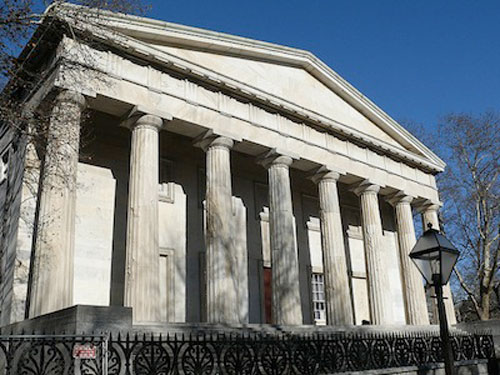
The Second Bank of the U.S was chartered in 1816.
One year after Waterloo, and the Rothschild’s takeover of the Bank of England, the American congress passed another bill allowing for the formation of another privately owned bank, The Second Bank of the U.S.
The new banks charter was a copy of the previous banks, with the U.S. government owning 20% shares. The shares were paid upfront by the treasury, and taxation. Then through the fraudulent practice of fractional banking, the money was formed into loans, with the loan money being used by the private bankers to purchase the remaining 80% of the bank shares. Just as before, the primary shareholders remained a secret. The largest blocks, about one-third of the shares, were sold to foreigners. The Second Bank of the U.S. was deeply rooted in Britain. By 1816, the Rothschild banking cartel had taken control over the Bank of England, and the new privately held, Second Bank of the U.S.
XV. Andrew Jackson: “I Killed the Banks.”
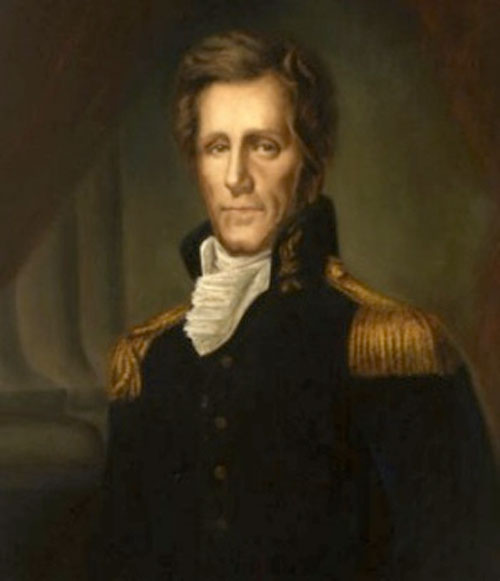
Andrew Jackson, 7th President of the United States.
After twelve years of The Second Bank of the U.S. manipulating the American economy, the American people had had enough. Opponents of the bank nominated a senator from Tennessee, Andrew Jackson, to run for president. Jackson was the hero of the Battle of New Orleans. Initially, no one gave Jackson a chance to win the presidency. The banks had long been able to control the political process with money. However, to the surprise, and dismay of the money changers, Jackson was swept into office in 1828.
Jackson was determined to kill the bank at his first opportunity, and wasted no time attempting to do so. However, the banks twenty-year charter didn’t come up for renewal until 1836. The last year of his second term, if he could survive that long. During Jackson’s first term her rooted out the banks minions from government service. Jackson fired 2000 of the 11,000 employees of the federal government. In 1832, with Jackson’s reelection approaching, the banks struck an early blow, hoping Jackson would not want to stir up controversy. The banks asked congress to sign a renewal bill. This was four years earlier than the bank’s renewal was to come up. Congress complied, and sent the bill for Jackson to approve. Jackson vetoed the bill. That veto remains one of America’s greatest documents. Jackson knew the responsibility of the American government towards its citizens, both rich and poor. In signing that bill Jackson said,
“It is not our own citizens only who are to receive the bounty of our Government. More than eight million of the stock of this bank are held by foreigners. Is there no danger to our liberty and independence in a bank that in its nature has so little to bind it to our country, controlling our currency, receiving our public moneys, and holding thousands of our citizens in dependence? This would be more formidable and dangerous than a military power of the enemy. If government would confine itself to equal protection, and, as heaven does its rains, shower its favor alike on the high and the low, the rich and the poor, it would be an unqualified blessing. In the act before me there seems to be a wide and unnecessary departure from these just principles.”
In July of 1832, Congress was unable to override Jackson’s veto. Thereafter, Jackson had to run for reelection, and took his argument directly to the people. For the first time in presidential history, Jackson took his campaign for reelection on the road. His campaign slogan was, “Jackson and No Bank.” The national republican party ran Senator Henry Clay against Jackson. Despite the fact that the bankers spent more than three million dollars on Clay’s campaign, Jackson was reelected by a landslide in November of 1832. Regardless, the battle was only beginning. “The hydra of corruption is only scorched, not dead.”
Jackson ordered his new secretary of treasury, Louis McClain, to start removing the government deposits from the second bank, and to place them in state banks. McClain refused to do so. Jackson fired him, and appointed William J. DeWayne as the new secretary of the treasury. DeWayne also refused to comply with the president’s order. Jackson fired him as well, and appointed Roger B. Taney to the office. Taney began withdrawing government money from the banks on October of 1833. The banks head Nicolas Biddle used his influence to get the senate to reject Taney’s nomination. Then, in a rare show of arrogance, Biddle threatened to cause a depression if the bank was not rechartered.
“This worthy president thinks that because he has scalped Indians, and imprisoned Judges, he is to have his way with the Bank. He is mistaken.”
Biddle admitted that he was going to make money scarce, and force congress to restore the bank.
“Nothing but widespread suffering will produce any effect on congress. Our only safety is in pursuing a steady course of firm restriction, and I have no doubt that such a course will ultimately lead to restoration of the currency and the recharter of the bank.”
Biddle clearly intended to use the money contraction power of the bank to cause a massive depression, until the U.S. gave in.
Biddle made good on his threat. The bank began to contract the money supply by calling in old loans, and refusing to extend new ones. A financial panic ensued, followed by a deep depression. Biddle blamed Jackson for the crash, saying it was caused by the withdrawal of the federal funds from the bank. As a result, wages and prices plummeted, unemployment soared, and businesses went bankrupt.
The nation newspapers blasted Jackson in editorials. The banks threatened to withhold payments from politicians who refused to support the bank’s position. Within months, congress formed what was called, the Panic Session. Six months after Jackson had withdrawn federal money from the privately owned banks, he was officially censored. The resolution was passed 26-20, and was the first time a president had been censured by congress. Jackson lashed out at the bankers, “You are a den of vipers and I intend to route you out, and by God I will route you out.”
If congress could raise enough votes, congress could pass another bill and renew the banks monopoly over America’s money for another twenty years or even more. What the nation needed was a miracle, and it got one. The governor of Pennsylvania came out in support of Jackson, and Biddle had been caught boasting in public about the bank’s plan to crash the economy. Suddenly, the tide shifted, and in 1834, the House of Representatives voted 124-82 against rechartering the bank. This was followed by a more lopsided vote to establish a committee to investigate whether the bank had intentionally caused the crash. When the investigating committee, armed with a subpoena to examine the banks books, Biddle refused to give them up. Nor would he allow inspection of correspondence with members of congress, related to their personal loans, and advances Biddle had made to them. Biddle also refused to testify before the committee.
Jackson was the only president to ever pay off the debt. On January, 8th 1835, Jackson paid off the final installment on the national debt, which had been necessitated by allowing the banks to issue currency for government bonds rather than issuing treasury bonds without such debt. A few weeks later, on January 30th, 1835, an assassin named Richard Lawrence tried to shoot Jackson. Ironically, both pistols that Lawrence had to commit the crime, misfired. At trial, Lawrence was found not guilty by reason of insanity. After his release Lawrence bragged to friends that powerful people in Europe had put him up to the task, and promised to protect him if he were caught.
The following year the banks charter ran out and, The Second Bank of the U.S. ceased functioning as the nations central bank. Biddle would later be arrested, and charged with fraud. Biddle was tried and acquitted, but died shortly thereafter while tied up in civil suits. It took the money changers seventy-seven more years before they could undue the damage Jackson had caused them. When Jackson was asked what his most important accomplishment had been, he is famously quoted as saying, “I killed the bank.”
XVI. Abraham Lincoln: Civil War, Greenbacks and Assassination
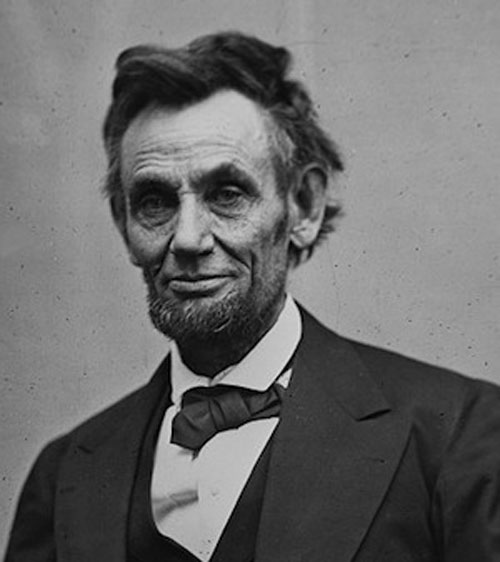
Abraham Lincoln, 16th President of the United States.
Although Jackson killed the central bank, fractional reserve banking remained in use by the numerous state chartered banks. This fueled economic instability in the years before the civil war. Still, the central bankers were out, and as a result American thrived as it expanded westward. The central bankers struggled to regain power of the bank, but to no avail. Finally, they reverted to the old central banker’s formula of war to create debt and dependency. If they couldn’t get their bank any other way, America could be brought to its knees by plunging it into a civil war, just as they had done in 1812, after, The First Bank of the U.S. was not rechartered.
One month after the inauguration of Abraham Lincoln, the first shots of the Civil War was fired at Fort Sumter South Carolina. This occurred on April 12th, 1861. Americans have always been taught that slavery was the cause of the Civil War. This is true in part, but slavery was not the primary cause.
Lincoln knew that the economy of the southern states was dependent upon slavery. Before the Civil War, Lincoln had no intention of eliminating it. Lincoln addressed slavery in his inaugural address,
“I have no purpose, directly or indirectly to interfere with the institution of slavery in the states where it now exists. I believe I have no lawful right to do so, and I have no inclination to do so.”
Lincoln continued to insist that the Civil War was not about the issue of slavery.
“My paramount objective is to save the union, and it is not either to save or destroy slavery. If I could save the union without freeing any slave, I would do it.”
Northern protectionists were using their influence to prevent the southern states from purchasing cheaper goods, and European nations began to boycott cotton imports from the south. The southern states were in a double financial bind. They were forced to pay higher prices for the necessities of life, while their cotton exports plummeted. But there were other factors at work. The money changers were still infuriated that they had no control over America’s central bank. America’s “wildcat” economy had made the nation rich since the money changers lost control only twenty-five years earlier. The central bankers would then use the division between the northern, and southern states as an opportunity to split this rich new nation, and to gain control of the central bank again. The banker’s intention was to divide, and conquer the nation through war, which they would finance.
Otto Von Bismarck, the Chancellor of Germany, who united the German states said,
“The division of the United States into federations of equal force was decided long before the Civil War by the high financial powers of Europe. These bankers were afraid that the United States, if they remained as one block, and as one nation, would attain economic and financial independence, which would upset their financial domination over the world.”
Within months after the first shots at Fort Sumter, the central bankers loaned the nephew of Napoleon, Napoleon III of France, 210 million francs to seize Mexico, and station troops along the southern border of the U.S., taking advantage of the states war in violation of, The Monroe Doctrine. This was an attempt to return Mexico to colonial rule. No matter what the outcome of the Civil War, a weakened America, heavily indebted to the central, and international bankers, would open up Central, and South America to European colonization, and domination. This was the very thing that, The Monroe Doctrine had intended to prevent when it was enacted in 1823. During this same period, Britain moved 17,000 troops into Canada, and positioned them menacingly on the U.S. northern border. The British fleet went on war alert, should their quick intervention be called for.
Lincoln was in a double bind, and agonized over the fate of the union. There was a lot more to the war, than the differences between the northern and southern states. That was why Lincoln’s emphasis was always on preservation of the union, and not merely the defeat of the south.
Wars cost money, and Lincoln needed money to win, and in 1861, Lincoln, and his secretary of treasury Solomon P. Chase, went to New York to apply for the necessary loans. The money changers anxious to see the union fail, offered loans at 36% interest. Lincoln refused to accept those rates, and returned to Washington. Lincoln turned to an old friend, Colonel Dick Taylor of Chicago and placed him on the issue of obtaining the finances that were necessary for the war. During that meeting Taylor told Lincoln,
“Just get congress to pass a bill authorizing the printing of full legal tender treasury notes, and pay your soldiers with them, and go ahead, and win your war with them also.” Lincoln asked if the people of the U.S. would accept the notes, Taylor said, “The people or anyone else will not have any choice in the matter, if you make them full legal tender. They will have the full sanction of the government and be just as good as any money; as congress is given that express right by the Constitution.”
Between 1862-1863, Lincoln printed 400 million dollars in new bills. In order to distinguish them from other bank notes in circulation Lincoln’s bills were printed in green ink on the back side. Thus, the notes became known as green backs. With this new money, Lincoln paid the troops, and bought their supplies.
During the course of the war nearly 450 million dollars in green backs were printed at no interest to the federal government. Lincoln explained his rationale,
“The Government should create, issues and circulate all of the credit needed to satisfy the spending power of the government, and the buying power of the consumers. The privilege of creating and issuing money is not only the supreme prerogative of government, but is the government’s greatest creative opportunity. By the adoption of these principles, the taxpayers will be saved immense sums of interest. Money will cease to be the master, and become the servant of humanity.”
An editorial in the London Times explained the banker’s attitude toward the greenbacks.
“If this mischievous financial policy, which has its origin in North America, shall become underrated down to a fixture, then that government will furnish its own money without cost. It will pay off debts, and be without debt. It will have all the money necessary to carry on its commerce. It will become prosperous without precedent in the history of the world. The brains, and wealth of all countries will go to North America. That country must be destroyed, or it will destroy every monarchy on the globe.”
The scheme was so effective that in 1863, federal, and confederate troops began to mass for the decisive battle of the Civil War. The treasury was in need of further authority to issue more green backs. Lincoln allowed the bankers to push through the National Bank Act. These new banks would operate under a tax-free status, and collectively have exclusive monopoly power to create the new form of money, bank notes. Though green backs continued to circulate, there numbers were not increased. Most importantly, the entire U.S. money supply would be created out of debt where bankers would be buying U.S. government bonds, and issuing them for reserves for bank notes. John Kenneth Galbraith wrote,
“In numerous years following the war, the federal government ran a heavy surplus. It could not however, pay off its debt, retire its securities, because to do so meant there would be no bonds to back the national bank notes. To pay off the debt was to destroy the money supply.”
Later in 1863, Lincoln received unexpected help from Czar Alexander II of Russia. The Czar, like Bismarck in Germany knew what the international money changers were up to. Alexander II, steadfastly refused to allow international bankers to set up a central bank in Russia. If America survived, and was able to remain out of the crutches of the bankers, the Czar’s position would remain secure. If the bankers were successful in dividing America, and giving the pieces back to Britain and France, and both nations back to the control of the central banks, eventually they would threaten Russian again. So, the Czar gave orders that if either Britain or France, actively intervened by giving aid to the South, Russia would consider such action a declaration of war. Alexander II then sent part of his naval fleet to port in San Francisco.
Lincoln was reelected the following year in 1864. Had he lived he would have eliminated the national banks money monopoly, extracted from him during the Civil War. In November of 1864, Lincoln wrote a friend the following note,
“The money power preys upon the nation in times of peace and conspires against it in times of adversity. It is more despotic than monarchy, more insolent than autocracy, more selfish than bureaucracy.” Shortly before Lincoln was murdered, his former secretary Salmon P. Chase, bemoaned his role in helping secure the passage of the National Banking Act. “My agency, in promoting the passage of the National Banking Act, was the greatest financial mistake in my life. It has built up a monopoly which affects every interest in the country.”
On April 14th, 1865, just forty-one days after Lincoln’s second inauguration, and just five days after Lee surrendered to Grant, Lincoln was shot by John Wilkes Booth at Ford’s Theater. Otto Van Bismarck, the Chancellor of Germany lamented the death of Abraham Lincoln,
“The death of Lincoln was a disaster for Christendom. There was no man in the United States great enough to wear his boots. I fear that foreign bankers with their craftiness, and tortuous tricks will entirely control the exuberant riches of America, and use it systematically to corrupt modern civilization. They will not hesitate to plunge the whole of Christendom into wars, and chaos, in order that the earth should become their inheritance.”
Bismarck understood the bankers plan, and that the international bankers were responsible for Lincoln’s assassination, which finally surfaced seventy years later, in 1934.
Gerald G. McGeer, a popular, and well-respected attorney revealed the stunning charge in a five-hour speech before the Canadian House of Commons, blasting Canada’s debt based money system. During the height of the depression McGeer stated that he could end the depression, which was ravaging Canada. McGeer had obtained evidence that was deleted from the public record, which was provided by secret service agents that had attended the trial of John Wilkes Booth. John Wilkes Booth was a mercenary who had been hired by the international bankers. According to an article of the Vancouver Sun, on May 2nd, 1934, “Abraham Lincoln was assassinated through the machinations of a group representative of the international bankers who feared the United States President’s national credit ambitions, and the plot was hatched in Toronto, and Montreal. The bankers were the only group in the world at that time that desired the death of Lincoln. They were the group that had opposed Lincoln’s national currency program, and had fought him throughout the entire Civil War, regarding his policy of green back currency. McGeer stated that the international bankers not only wanted to reestablish a federal central bank, but also wanted to debase America’s currency on the gold they controlled. What this meant was the bankers wanted to put America on a gold standard. Lincoln had done just the opposite when he issued green backs, which were based purely on the good faith, and credit of the U.S. nation. McGeer wrote,
“They were the men interested in the establishment of the gold standard money system, and the right of the bankers to manage the currency and credit of every nation in the world. With Lincoln out-of-the-way they were able to proceed with that plan, and did proceed with in the United States. Within eight years after Lincoln’s assassination silver was demonetized and the gold standard money system set up in the United States.”
Why is silver bad for bankers, and gold good? Because silver was plentiful in the U.S., and very hard to control. Gold was, and always has been scarce. Historically, it has always been easy to manipulate the value of gold, but silver has always been more than fifteen times more abundant.
Not since Lincoln had the United States issued debt free notes. In another act of folly and ignorance the, 1994 Regal Act, actually authorized the replacement of Lincoln’s green backs with debt based notes. This meant that Lincoln’s greenbacks were in circulation in the U.S. until 1994.
XVII. The Gold Standard

After the assassination of Lincoln, the money changers next objective was to gain complete control over America’s finances. This was no easy task as with the opening of the American west, silver had been discovered in huge quantities, and Lincoln greenbacks remained popular. Despite these matters, the bankers continued to attack Lincoln’s greenbacks that continued to circulate in the U.S. W. Cleon Skousen wrote,
“Right after the Civil War there was considerable talk about reviving Lincoln’s brief experiment with the constitutional monetary system. Had not the European money-trust intervened, it would have no doubt become an established institution.”
On April 12th 1866, nearly one year to the day of Lincoln’s assassination, congress began to work for the interest of the international banking interests. Congress passed, The Contraction Act, which authorized the secretary of the treasury to retire the remaining greenbacks that were in circulation. The intention was to contract the money supply. Authors, Theodore R. Thoren and Richard F. Warner explained the results of the money contraction in their book, The Truth in Money Book.
“The hard times that occurred after the Civil War could have been avoided if the greenback legislation had continued as president Lincoln had intended. Instead, there were a series of manufactured money panics, known as recessions, which put pressure on congress to enact legislation to put the banking system under the banker’s exclusive control. Eventually, the Federal Reserve Act would be passed on December, 23rd, 1913. Under this act the money changers gained control of the central banking system, and American currency backed by gold. The first step of the banker’s strategy was to cause a series of panics through the recessions they created, and thereafter convince the American people that only a centralized control of the U.S. money supply could provide economic stability. The second step was to remove as much money as possible from the system that most Americans would be so desperately poor that they didn’t care, or would be too weak to oppose the bankers.”
By 1866 there was approximately 1.8 billion dollars in currency circulating in the U.S. This was about 50.46 per capita. In 1867 the bankers managed to remove approximately one billion dollars from circulation resulting in 44.00 per capita. By 1876 America’s money supply had been reduced to 600 million dollars. Only 14.60 per capita remained in circulation. In 1886 the money supply continued to be reduced to only 400 million in supply, with only 6.67 per capita remaining in circulation. This meant that the bankers removed 760% of America’s money from circulation within a mere 20 years.
Today economists try to sell the idea that recessions, and depressions are a natural part of “the business cycle.” The truth is, the bankers today, continue to manipulate the money supply, just as they had before, during, and after the Civil War.
How did the bankers manage to get the money supply to become so scarce? Simply, loans were called in, and no new loans were issued. In addition, silver coins were melted, and removed from circulation.
In 1872, Ernest Seyd was given 100,000 pounds, about 500,000 dollars by the Bank of England, and sent to America to bribe congressmen to get silver demonetized. Seyd was told that if that was not sufficient, to draw an additional 100,000 pounds, or as much as would be necessary to achieve the Bank of England’s goal. The next year, congress passed the, Coinage Act of 1873. IT was Seyd who actually drafted the legislation. In 1874, Seyd admitted who was behind the scheme.
“I went to America in the winter of 1872-1873, authorized to secure, if I could, the passage of a bill demonetizing silver. It was in the interest of those I represented, the governors of the Bank of England, to have it done. By 1873, gold coins were the only form of coin money.”
In 1876, only three years later with one-third of America’s workforce unemployed, the population was growing restless. People desired a return to the greenback monetary system, a return to the silver standard, or any other monetary system that would make money more plentiful. That year congress created the U.S. Silver Commission to study the problem. Their report blamed the money retraction on the international money bankers. The report compared the deliberate money contraction after the Civil War to the fall of the Roman Empire.
The disaster of the Dark Ages was caused by decreasing money, and falling prices. Without money, civilization could not have had a beginning and with a diminishing supply, it must languish, and unless relieved, finally perish. During the Christian era the metallic money of the Roman Empire amounted to one billion, eight hundred million. By the end of the 15th Century it had shrunk to less than 200 million. History records no other such disastrous transition as that from the Roman Empire to the dark ages. U.S. Silver Commission. Despite this report, Congress took no action and the following year, in 1877, the starving masses rioted from Pittsburg to Chicago. The torches of starving vandals lit up the sky across America. The bankers huddled to decide what to do. They decided to hang on. Now that they were back in power, they were not about to give it up, and at a meeting of the American Banking Association, they urged their membership to do everything in their power to put down the notion of a return to greenbacks.
The American Banker’s Association secretary, James Beul authored a letter, which blatantly called on the banks to subvert not only congress, but also the press.
“It is advisable to do all in your power to sustain such prominent daily and weekly newspapers, especially the Agricultural and Religious Press, as will oppose the greenback issue of paper money, and that you will also withhold patronage from all applicants who are not willing to oppose the government issue of money. To repeal the Act creating bank notes, or to restore to circulation the government issue of money will be to provide the people with money, and will therefore seriously affect our individual profits as bankers and lenders. See your congressmen at once and engage him to support our interest that we may control legislation.”
As political powers tried to push for change, the press, working with the bankers, tried to turn the American people away from the truth.
In 1878, the New York Tribune wrote, “The capital of the country is organized at last and we will see whether congress will dare to fly in its face.” But, it didn’t work entirely. On February, 28th 1878, congress passed the Sherman Law, allowing the minting of a limited amount of silver dollars ending the five-year hiatus. This did not end the gold backing of the currency, nor did it completely free silver. As a result, the bankers finally freed up money for loans, and the post-Civil War depression had finally come to an end.
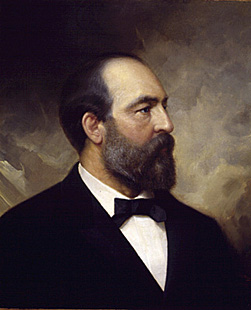
James Garfield, the 20th President of the United States.
Three years later, the American people would vote James Garfield as their 20th president. Garfield would survive a mere 200 days in office before being assassinated. Garfield understood how the economy was being manipulated by the international bankers. As a congressman, Garfield had been a chairman of the appropriation committee, and had been a member of banking and currency. After his inauguration he slammed the money changers publicly.
“Whoever controls the volume of money in any country is absolute master of all industry and commerce. And when you realize that the entire system is very easily controlled, one way or another, by a few powerful men at the top, you will not have to be told how periods of inflation and depression originate.”
Within a few weeks of making this statement, on July 2nd, 1881, Garfield would be assassinated.
XVIII. Crown Of Thorns Cross Of Gold

An illustration of William Jennings Bryan’s crusade against the gold standard.
In 1891, the money changers prepared to take the American economy down again. There method, and motive was laid out in shocking clarity discovered in a memo sent to American Banking Association members. This memo called for bankers to create a depression on a certain date three years in the future. According to the Congressional Record, dated April 29, 1913,
“On September 1st1894, we will not renew our loans under any consideration. On September 1st, we will demand our money. We will foreclose, and become mortgagees in possession. We can take two-thirds of the farms west of the Mississippi, and thousands of them east of the Mississippi as well, at our own price. Then the farmers will become tenants as in England.”
These depressions could be controlled because America was on the gold standard, because when gold is scarce it becomes one of the easiest commodities to manipulate.
By 1896 the issuance of more silver money had become the main issue during the presidential campaign. Williams Jennings Bryan a senator from Nebraska ran for presidency on the Free Silver Issue. At the Democratic Convention in Chicago Bryan made an emotional speech, which won him the nomination. The speech was entitled, Crown of Thorns and Cross of Gold. Bryan was only thirty-six years old at the time of his speech, and is widely regarded as one of the most important orations ever made at a political convention. At the end of the speech Bryan said,
“We will answer their demand for a gold standard by saying to them: You shall not press down upon the brow of labor this crown of thorns, you shall not crucify mankind upon a cross of gold.”
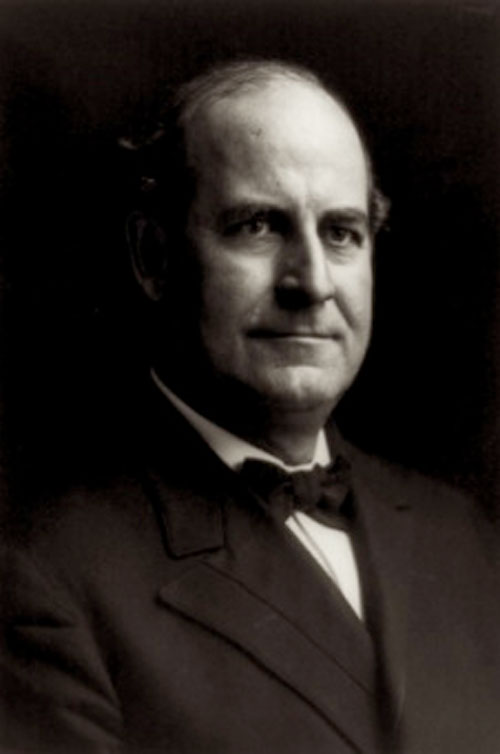
William Jennings Bryan (1860-1925).
The bankers lavishly supported the republican candidate William McKinley who favored the gold standard. The resulting contest was one of the most fiercely contested presidential races in American political history. Bryan made over six hundred speeches in twenty-seven states. The McKinley campaign had manufacturers, and industrialist inform their employees that if Bryan were elected, all factories and plants would have to close, and there would be no work. The banker’s ploy worked, and McKinley beat Bryan by a small margin. Bryant ran for president again in 1900, and again in 1908, falling short each time. During the 1912 Democratic Convention, Bryan was a powerful figure who would help Woodrow Wilson win the nomination. When Wilson became president, he appointed Bryan as secretary of state, but Bryan soon became disenchanted with the Wilson administration. Bryan served only two years under Wilson before resigning in 1915, over the highly suspicious sinking of the Lusitania, which was the event to drive America into World War One. Although William Jennings Bryan never gained the presidency, his efforts delayed the money changers for seventeen years from obtaining their next goal, a new privately owned central bank for America.
XIX. Orchestrated Crashes, Bank Runs, Panics and Systemic Crisis
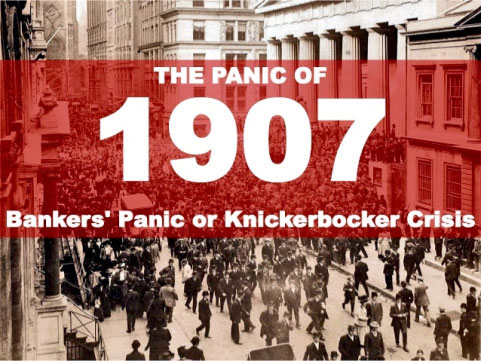
A bank run occurs when a fractional-reserve banking system suddenly has large number of customers attempting to withdraw cash from deposit accounts because they believe the financial institution is about to go insolvent. A banking panic is a financial crisis that occurs when many banks suffer runs at the same time, as people try to convert their threatened deposits into cash. A systemic banking crisis is one where nearly all of the banking capital in a country has been wiped out. the resulting chain of bankruptcies can cause a long economic recession as domestic businesses, and consumers are starved of capital.
In the musical Mary Poppins, Mr. Dawes, the elderly banker, optimistically attempts to persuade young Michael to put his money in the bank on the grounds that, “If you invest your tuppence wisely in the bank, safe and sound. Soon that tuppence will compound.” Not only would the boy receive a slice of the pie in, “railways through Africa, dams across the Nile, majestic self- amortizing canals and plantations of ripening tea”, promises Dawes, but he would also “achieve that sense of stature, as your influence expands to the high financial strata, that established credit now commands”. The boy, reluctant to entrust his pocket money to the banker protests, prompting other customers to take fright and frantically begin withdrawing their savings. Dawes, Tomes, Mousely, Grubbs Fidelity Fiduciary Bank has to temporarily suspend trading. Michael’s father, “Mr. Banks”, is fired due to his son triggering the first run on the bank since 1773.
The victims of the crash of 1907 are by far not the first casualties of the international bankers. The Roman Empire debased its coinage in 1622, causing wide spread suffering. Holland’s 1637 tulip bubble. The Semper Augustus bulb once sold for 6,000 Dutch florins at a time when a tonne of butter cost 100. Britain’s South Sea Bubble of 1720 occurred over exaggerated claims of future returns on money speculation. Sir Isaac Newton was able to “calculate the movement of the stars, but not the madness of men”, after losing 20,000 British pounds on a failed venture. The 18th century saw eleven financial crashes and the 19th century another eighteen. American banking panics caused crashes in 1819, 1837, 1847, 1857, 1873, 1884, 1890 and 1896. Australia had numerous crashes throughout the nineteenth century, and beyond.
There were thirty-three crashes that occurred in the 20th century, chief among them was the Wall Street Crash of 1929, and Japan’s 1990s crash due to banks in that country maintaining reserves as low as 1-2%.
In nearly all of these crisis, the bankers received legislative protection, and financial infusion that came from the taxpayers who had lost all their savings. The bankers continued to live lavish lifestyles, brought home unearned bonuses, and purchased the spoils for pennies on the dollars.
1901 brought the first panic on Wall Street. By October of 1903, the “Rich Man’s Panic” was over, when J. P. Morgan’s returned from his annual European art-collecting expedition, and helped restore confidence in the failing markets. This panic was a brief interlude in the bull market, but it was of great significance as the upper class, and insiders suffered the most, not the small investors. Early in the year the small investors went on a “buyer strike”, deciding that prices were too high. They sold in the early spring.
In 1903, investment bankers consolidated their positions, and destroyed competition. The panic demonstrated that small investor could not be relied upon, so the bankers turned to new sources of funds, finding them in banks, trust companies, and insurance companies, which were growing rapidly during the early twentieth century.
The panic of 1907 was the first stock market crash on the New York Stock Exchange. This was due to E. H. Harriman, Jacob Schiff, J. P. Morgan, and James J. Hill struggle for the financial control of the Northern Pacific Railway. The stock cornering was orchestrated by James Stillman, and William Rockefeller’s First National City Bank, which was financed by Standard Oil money. After reaching a compromise, the moguls formed the Northern Securities Company. The result of the panic was thousands of small investors being ruined.
The panic of 1907 was a huge crisis for America, as the stock market lost half its value, the economy fell into recession, banks and trust companies suffered catastrophic runs, and the National Bank of North America collapsed. This orchestrated “crisis” led to the decision by a few New York banks to retract loans, which soon spread nationwide, eventually leading to the creation of the Federal Reserve System, America’s central bank, in 1913. A key player in the crisis was F. Augustus Heinze, and his Knickerbocker Trust Company, whose dodgy dealings in the financial, and commodities markets helped precipitate the stock market crash.
The worse financial disaster in the history of finance began when a frantic selling of more than 12M in shares occurred on what has become known as Black Thursday, October 24th 1929. The world’s foremost capital market crashed, with investors selling a total of 16,410,030 shares, a number not exceeded until thirty years later. Some 14B was wiped off the value of the New York Stock Exchange in the first day alone. By 1933, some 11,000 of America’s 25,000 banks had gone bust. The Morgan’s, Rockefellers and Lehman’s, survived as millions of investors were ruined. Eleven people jumped from upper-floor windows of Wall Street as the scale of their losses became apparent. This was a crash so profound, that it marked the end of an era, and the beginning of another. The Roaring Twenties came to a close, as the Black Thirties began. Over the next few years, America’s jobless climbed to thirteen million, as millions lost their homes. Those homes were snapped up by the bankers who caused the crash. Stock prices remained 75% below their 1929 peak as of April 1942. It took the market a quarter of a century to recover.
The Wall Street crash, followed a decade-long speculative boom during which millions of investors piled into the stock market, borrowing to buy more and more. Rising share prices prompted people to invest, as banks lent more and more. This created what is known as a classic economic bubble. By the time the crash came, brokers were lending as much as 60% of the face value of the shares. The American president of that time had declared it would be inappropriate to intervene.
Banking collapses don’t come much bigger than that of the Bank of Credit and Commerce International, closed down by the Bank of England in July 1991 after regulators found the bank had been engaging in worthless activities, such as fraud, tax evasion, money laundering, arms trafficking, smuggling, unlawful property dealing, bribery, and the support of terrorism. Around a million investors in more than 70 countries, including Crown jeweler’s Garrard’s, got burned as BCCI, which was founded in Pakistan in 1972, and had once claimed assets of 25B, was shown to have lost 13B. Money from Abu Dhabi, the Bank of America, and the CIA went into setting up the bank, which expanded at what can only be called suspicious speed throughout the 1970s, growing from 19 branches and 200M in assets. By 1980, the bank had grown to 150 branches to the claimed 4B in assets. Journalist Dan Atkinson wrote that the bank was spending its customers’ deposits, rather than investing them, and was insolvent as early as 1977.
Baring’s was an old, and established banking entity. It was the oldest merchant bank in the London, until it went belly-up in 1995, following losses of some £827M, caused by one single trader, Nick Leeson. Baring’s was founded in 1762, and despite Britain being at war with France, the bank had helped to finance the Louisiana Purchase, by which the United States bought nearly a quarter of its current territory from the French in 1803. The Baring Bank also had to be rescued by the Bank of England in 1890, caused by bad investments in Argentine and Uruguay. In the end, the bank’s illustrious history, nor its connections with the British royal family could save it.
Savings and loans institutions in the United States were small local banks that made home loans, and took in deposits from the average working person. These banks dated back to the 1800s, and were comparable in many ways to Britain’s building societies. In the 1970s and 80s, however, financial deregulation encouraged those savings and loan banks to venture into other financial territories that offered complex products. The S&Ls lend large sums to investors in direct competition with the major U.S. commercial banks, but without the expertise, and regulatory framework. Predictably, large numbers of S&Ls found themselves in deep trouble, and by 1985, a run initiated on S&L institutions in Ohio, and Maryland. Approximately 1,000 of America’s 4,000 S&L’s eventually went belly-up in the largest, and costliest venture in public misfeasance, malfeasance and larceny of all time. The federal government insured many of the deposits in the S&Ls, and faced massive liabilities when they collapsed. The total cost of the bailout exceeded 150B.
On April 19th 2002, in a desperate attempt to prevent the collapse of the economy, the Argentine government was forced to order the indefinite closure of all of the country’s banks. Falling GDP, high government spending, rampant corruption, endemic tax evasion, rising unemployment, and soaring public debt had finally come to a head. Investors lost confidence in the country’s economy, and begun besieging their banks to withdraw pesos, and convert them to the U.S. dollar, and in investments abroad. Exacerbating the circumstances was when all banking, and foreign exchange transactions were halted. These restrictions were worse than those introduced a few months earlier, which prevented depositors from withdrawing more than the equivalent of 500 USD a month. Many Argentinians obtained a court ruling that overturned that law, resulting in banks bleeding an additional 100M a day. By the time a full banking freeze was ordered, the Argentine banks had been bled over 10% of its cash.
XX. J.P. Morgan and the Privately Held Central Bank
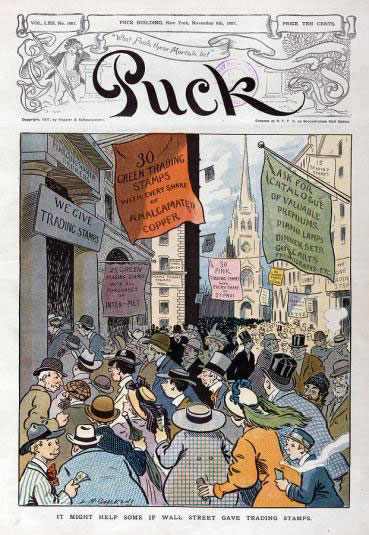
During the early 1900’s bankers like J.P. Morgan led the charge to reinstate a privately held central bank. One last orchestrated financial panic would focus the American’s attention on the “need” for a newly chartered central bank. The fraudulent rationale was that only a central bank could prevent bank failures.
Morgan at this time was the most powerful banker in the U.S. He was also a suspected agent for the Rothschild cartel. Morgan had helped finance John D. Rockefeller’s Standard Oil empire. Morgan also financed the monopolies of Edward Harriman in railroads, Andrew Carnegie in steel, and others in various industries. Morgan’s father was Julius Morgan. He had been America’s financial agent to the British. After his father’s death J.P. Morgan took on a British partner Edward C. Grenfell, a long time director of the Bank of England. Ironically, on his death, J.P. Morgan’s estate contained only a few million dollars. The bulk of securities that everyone thought Morgan had owned, were in fact, owned by foreign interests.
In 1902, is is often repeated that President Theodore Roosevelt went after Morgan, and their conspirators to break up their industrial monopolies under, The Sherman Anti-Trust Act. In reality, Roosevelt did little to interfere with the growing monopoly of the industrialist bankers, and their surrogates. One such example is where Roosevelt supposedly broke up the Standard Oil monopoly. Standard Oil wasn’t broken up at all, it was merely divided into seven corporations, with all of those corporations still controlled by the Rockefellers. The public was made aware of this through political cartoonists like, Thomas Nast, who referred to bankers as the money trusts.
In 1891, a British labor leader made the following statement on the subject of the Rothschild banking cartel,
“This blood-sucking crew has been the cause of untold mischief and misery in Europe during the present century, and has piled up its prodigious wealth chiefly through fomenting wars between states, which ought never to have quarreled. Whenever there is trouble in Europe, wherever rumors of war circulate, and men’s minds are distraught with fear of change and calamity, you may be sure that a hook-nosed Rothschild is at his games somewhere near the region of the disturbance.”
Comments like this worry the Rothschild cartel, and towards the end of the 1800’s they purchased Reuters News Agency so they could exercise control over what the media printed about them, and the markets they controlled.
By 1907, the year after Teddy Roosevelt reelection, Morgan tried to push for a central bank again. Using their combined financial muscle, Morgan and his friends were able to crash the stock market. At that time, thousands of small banks were vastly over extended, some had reserves less than one percent, due to the principle of fractional reserves, which had not been property regulated by government officials charged with oversight.
Within days, bank runs were common across the nation. Morgan stepped into the public arena, and promised to prop up the faltering American economy, by supporting failing banks with money, manufactured out of nothing. It was an outrageous proposal, far worse than even fractional reserve banking, but congress permitted him to do so. Morgan printed 200 million dollars in completely worthless, private money, and bought things with it, paid for services with it, and sent some of it to his branch banks to lend out at interest. His plan worked, and soon the public regained their confidence, and quit hording their currency. As a result, as in the crash of 2007, banking power was further consolidated into the hands of a few large banks. By 1908, the panic was over, and Morgan was hailed as a hero by the president of Princeton University, a man by the name of Woodrow Wilson. “All this trouble could be averted if we appointed a committee of six or seven public-spirited men like J.P. Morgan to handle the affairs of our country.” Economic textbooks would later claim that the creation of the Federal Reserve system was a direct result of the panic of 1907. “With the alarming epidemic of bank failures the country was fed up once and for all with the anarchy of unstable private banking.” Minnesota congressman, Charles A. Lindbergh Sr. would explain that the panic of 1907 was really nothing more than a scam perpetrated by J.P. Morgan, and other banking interests. “Those not favorable to the money trust could be squeezed out of business, and the people frightened into demanding changes n the banking and currency laws which the Money Trust would frame.”
Since the passing of the National Bank Act of 1863, the money changers had been able to create a series of booms and busts. The purpose was not only to fleece the American public of their property, but to later claim the banking system was so unstable that it had to be consolidated into a central bank once again.
XXI. Jekyll Island: The Aldrich Bill
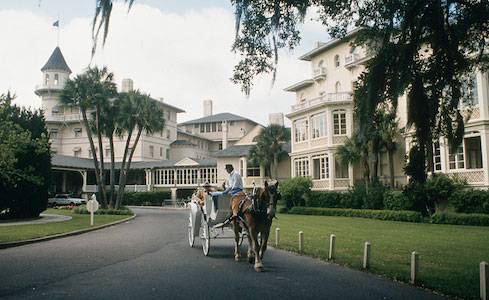
Jekyll Island, where the crime of the century was hatched, the Federal Reserve Act.
After the crash of 1907, Theodore Roosevelt responded by signing into law a bill called, The National Monetary Commission. The commission was to study the banking problem, and make a report to congress. The committee was packed with Morgan’s friends, and cronies. The chairman was senator Nelson Aldrich from Rhode Island. Rhode Island was the location of homes of America’s wealthiest families. Aldrich’s daughter had married John D. Rockefeller Jr. Together they had five sons. John, Nelson would become vice president of the empire in 1964. Other sons included Lawrence, Winthrop and David, who would become the head of the council of foreign relations, and former chairman of Chase Manhattan Bank.
As soon as the National Monetary Commission was set up, senator Aldrich immediately embarked on a two-year tour or Europe, where he consulted in length with the private central bankers in England, France and Germany. The total cost of his trip was 300,000 USD, an astronomical amount of money in those days. The entire trip was paid for by taxpayers. Shortly after his return on November 22nd, 1910 some of the wealthiest, and most influential men boarded his private railroad car, and in the strictest of secrecies, traveled to Jekyll Island, off of the coast of Georgia. With the group came Paul Warburg, who had been given a 500,000 annual salary to lobby for the passage of a privately owned central bank in America by the investment firm, Kuhn, Lobe and Co. Warburg’s partner in this firm was a man named Jacob Schiff, the grandson of the man who shared the green shield house with the Rothschild family in Frankfurt, Germany. At that time, Schiff was in the process of spending 20 million dollars to finance the overthrow of the Czar of Russia. These three European banking families, the Rothschild’s, Warburg’s and Schiff’s, were interconnected in marriage, down through the years, just as their American banking counterparts, the Morgan’s, Rockefeller’s, and Aldrich’s were.
Secrecy was so tight regarding what was transpiring during this event that all seven primary participants were cautioned to use only first names. Eve their servants were prevented from learning their identities. Years later one participant, Frank Vanderlip, the president of National City Bank of New York, and a representative of the Rockefeller family confirmed the Jekyll Island trip in a February 9th addition of the Saturday Evening Post. “I was as secretive indeed, as furtive as any conspirator. Discovery, we knew, simply must not happen, or else all our time and effort would be wasted. If it were to be exposed that our particular group had got together and written a bank bill, that bill would have no chance whatever of passage by Congress.”
The participants had gone to Jekyll Island to solve one problem, and that problem was, how to bring back a privately owned central bank. But there were other problems that needed to be addressed. First, the market share of the big national banks were shrinking fast. In the first ten years of that century, the number of national banks had doubled to over twenty thousand. By 1913, only 29% of all banks were national banks, and they held only 57% of all deposits. Senator Aldrich would later admit in a magazine article, “Before the passage of this Act, the New York Bankers could only dominate the reserves of New York. Now, we are able to dominate the bank reserves of the entire country.” In the mind of the plotting conspirators, something had to be done to bring these new banks under their control. As John D. Rockefeller stated, “Competition is sin.” Secondly, corporations were so strong that were beginning to finance their expansions out of profits, instead of taking out huge loans from large banks. In the first ten years of the new century, 70% of corporate spending came from profits. In other words, American industry was becoming independent of the money changers, and that trend had to be stopped. All the participants new that all these problems could be resolved, but perhaps their biggest problem would be a public relation problem, and that would be the name of the new bank.
Aldrich believed the word bank should not appear in the bills name. Warburg wanted to call the “legislation”, the National Reserve Bill. The idea was to give the impression that the purpose of this new bill was to conceal the character of a new privately held central bank. Due to Aldrich’s large ego, he insisted the bill be called the Aldrich Bill. After nine days of the banker’s conspiring to take over America’s money, the group dispersed. The one thing the group managed to agree upon was that the new bank would be similar to the old privately held central Bank of the United States, that it would be given a monopoly over the U.S. currency, and the power to create money out of nothing.
How does the Federal Reserve create money out of nothing? It is a four step process, but bonds must first be discussed. Bonds are a promise to pay for government I.O.U.’s. People buy bonds to get a secure rate of interest, and at the end of the term of the bond the government repays the bond, plus interest, and the bond is then terminated. There are approximately 16 trillion dollars in U.S. loans, or bond debts that exists today.
XXII. Four Steps of Creating Money
- The Federal Open Market Committee approves the purchase of U.S. Bonds on the open market.
- The bonds are purchased by the Fed from whoever is offering them for sale on the open market.
- The Federal Reserve pays for the bond with electronic credits to the seller’s bank, these electronic credits are backed by, and created out of nothing. The Federal Reserve creates them out of nothing.
- The bank uses the deposits as reserves and are permitted to loan out over ten times the amount to new borrowers with interest.

The method by which the Federal Reserve creates money out of nothing is magical.
In this manner The Federal Reserve purchase of a million dollar in bonds, gets turned into ten million dollars in bank accounts. The Feds in affect create 10% of this phony money that is not backed by anything, and the banks then create the other 90%, which is not backed by anything. To reduce the amount of money in the economy, the process is simply reversed. The Feds sell bonds to the public, and the money flows out of the purchaser’s bank, and loans must be reduced by ten times the amount of the sale, so a Fed sale of a million-dollar bond, results in ten million dollars of less money in the economy.
The next questions that must be asked are, how does all of this benefit the bankers whose representatives conspired on Jekyll Island? It misdirected banking reform from proper solutions. It prevented a proper debt free currency like the greenbacks from making a comeback. The bond based system of government finance forced on Lincoln after he created greenbacks was now cast in stone. It delegated to the bankers the right to create 90% of the nation’s money supply, based on merely fractional reserves, which the bankers then loan out at interest. It centralized overall control of the U.S. nations money supply in the hands of a few men. It established a central bank with a high degree of independence from effective political control. Soon after its creation, the Feds contraction of money in the early 1930’s would cause the Great Depression, and this independence has been enhanced ever since that period, through additional loss.
In order for the Federal Reserve to fool the public into believing the Fed was a governmental agency, and that the government would retain control over the bank, the planners called for the new central bank to be overseen by a board of governors, appointed by the president of the U.S., and approved by the senate. In reality, all the bankers had to do was to ensure that their men got appointed to the board. An easy enough task, since bankers have money, and money buys influence over politicians.
When the participators of the secretly held meeting at Jekyll Island returned home, the publicity blitz was on. The largest New York bankers put together an educational fund of five million dollars to finance professors at respected universities to support the new bill. Woodrow Wilson was one of the first to jump on the band wagon. Regardless, the Aldrich Bill was recognized for what it was, and it was quickly recognized as the banker’s bill. A bill that would become known as the money trust. As congress Lindberg stated during the bills debate, “The Aldrich Plan is the Wall Street plan. It means another panic, if necessary, to intimidate the people. Aldrich, paid by the government to represent the people, proposes a plan for the trusts instead.”
The bankers saw that they didn’t have enough congressional votes to have the Aldrich Bill passed, therefore the bill was never brought to a vote. The bankers were not defeated however, they quietly decided to move toward financing a new effort, which was to finance Woodrow Wilson as the democratic nominee. Wall Street financier, Bernard Baruch, was put in charge of Wilson’s education. Historian, James Perloff wrote, “Baruch brought Wilson to the Democratic Party Headquarters in New York in 1912, leading him like one would lead a poodle on a string. Wilson received an indoctrination course from the leaders convened there.”
The stage was set, and the money changers were poised to install their privately owned central bank. The damage to the bankers that President Jackson had done seventy-six years earlier, had only been partly repaired with the passing of the National Banking Act, during the Civil War. Since then, the battle for the takeover of all of America’s finances raged onward for decades. The Jacksonians became known as greenbackers, who were the hardcore backers of William Jennings Bryan. With Bryan leading the charge, the opponents of the money changers, ignorant of Baruch’s tutelage, now threw themselves behind the democratic representative Woodrow Wilson. The Americans, and Bryan would be betrayed yet again.
XXII. The Federal Reserve Act of 1913 Revisited

An artist rendition of Woodrow Wilson signing The Federal Reserve Act of 1913.
During the democratic campaign supporters of Woodrow Wilson pretended to oppose the Aldrich Bill. Rep. Louis McFadden, a democrat, and chairman of the House of Banking and Currency Committee explained twenty years later,
“The Aldrich Bill was condemned in the platform, when Woodrow Wilson was nominated, the men who ruled the democratic party promised the people that if they were returned to power there would be no central bank established while they held the reins of government. Thirteen months later that promise was broken, and the Wilson administration, under the tutelage of those sinister Wall Street figures who stood behind Colonel House, established here in our free country, the worm-eaten institution of the king’s bank to control us from the top downward, and to shackle us from the cradle to the grave.”
Once Wilson was elected Morgan, Warburg, Baruch and other bankers hatched their plan they called the Federal Reserve System. The Democratic leadership hailed the new bill as the Glass-Owen Bill, as something radically different from the Aldrich Bill, but in fact the bill was virtually identical in every important detail. So vehement were the democrats in denial of the similarities of the bill, that Warburg, the writer of both bills, he had to step in and reassure the bribed members of congress that the two bills were, in fact, identical. “Brushing aside the external differences affecting the shells, we find the kernels of the two systems very closely resembling and related to one another.” Warburg’s admission was for private consumption only. Publicly the money trust used Aldrich, and Frank Vanderlip, the president of Rockefeller’s National City Bank of New York, and one of the Jekyll island seven secret conspirators, to oppose the Federal Reserve System. Years later, a Saturday Evening Post article stated that Vanderlip admitted that the two bills were identical. “Although the Aldrich Federal Reserve Plan was defeated when it bore the name Aldrich, nevertheless its essential points were all contained in the plan that finally was adopted.”
As Congress neared a vote, they called an Ohio attorney named, Alfred Crozier to testify. Crosier noted the similarities between the Aldrich Bill, and the Glass-Owen Bill. “The bill grants just what Wall Street and the big banks for twenty-five years have been striving for, private instead of public control of currency. It (the Glass-Owen Bill) does this as completely as the Aldrich Bill. Both measures rob the government, and the people of all effective control over the public’s money, and vest in the banks exclusively the dangerous power to make money among the people scarce or plenty.” During the debate on the bill senators complained that big banks were using their financial muscle to influence the outcome. “There are bankers in this country that are enemies of the public welfare,” said one senator. Despite the charges of fraud and corruption, the bill was snuck through the senate on December 23rd, 1913 after most senators had left town during the holidays, after being assured by the leadership that nothing would be done about the bill until congress was to return after the Christmas recess. On the day the bill was passed, congressman Lindberg warned his countrymen that, “This Act establishes the most gigantic trust on earth. When the president signs this bill, the invisible government by the monetary power will be legalized. The people may not know it immediately, but the day or reckoning is only a few years removed. The worst legislative crime of the ages is perpetrated by this banking bill.”
Only weeks earlier congress also had passed a bill legalizing income tax. The income tax was important to the bankers because they finally had in place a system that would run a perpetual, and unlimited federal debt. How was the interest, and principal on that debt be repaid? A central bank’s scheme is to print money out of nothing. At that time the federal government was small. The federal government existed on tariffs, and excise taxes nearly exclusively. Here, just as with the Bank of England, the income payments had to be guaranteed by direct taxation of the people. The money changers knew that if they had to rely solely on contributions from the state, eventually the individual state legislatures would revolt, and refuse to pay the interest on their own money, and bring political pressure to keep the debt small. It must be noted that, in 1875, the Supreme Court found a similar income tax law to be unconstitutional. In 1909, the Supreme Court also held that a corporate income tax was unconstitutional. Thereafter, senator Aldrich supported a constitutional amendment that would permit an income tax. The proposed XVI Amendment to the constitution was then sent to legislatures for approval. Some critics of the amendment claim it was never ratified by the necessary 3/4 of the states. In other words, the XVI Amendment may not be a legal attachment to the U.S. Constitution. However, by 1913, senator Aldrich had pushed the amendment through congress. Without the power to tax the people directly, and bypass the states, the Federal Reserve Bill would be far less useful to those who wanted to drive Americans deeper into debt, and servitude of the big bankers, and their interests.
One year after the passage of the Federal Reserve Bill, congressman Lindbergh explained how that bill created what has come to known as the business cycle, and how bankers use it to manipulate business, and property ownership, for the benefit of the bankers only.
“To cause high prices, all the Federal Reserve Board will do will be to lower the rediscount rate, producing an expansion of credit and a rising stock market, then when businessmen are adjusted to these conditions, it can check prosperity in mid-career by arbitrarily raising the rate of interest. It can cause the pendulum of a rising and falling market to swing gently back and forth by slight changes in the discount rate, or cause violent fluctuations by a greater rate variation, and in either case it will possess inside information as to financial conditions and advance knowledge of the coming change, either up or down. This is the strangest, most dangerous advantage ever placed in the hands of a special privilege class by any Government that ever existed. The system is private, conducted for the sole purpose of obtaining the greatest possible profits from the use of other people’s money. They know in advance when to create panics to their advantage. They also know when to stop panic. Inflation and deflation work equally well for them when they control finance. Already the federal banks have cornered the gold and gold certificates.”
Lindberg was correct on all points, however, he hadn’t realized that most European nations had already fallen prey to bankers centuries earlier. Lindbergh was not the only outspoken critic of the Fed. Louis McFadden the chairman of the House Banking and Currency Committee from 1920-1931 remarked, “The Federal Reserve Act brought about a super-state controlled by international bankers and international industrialists acting together to enslave the world for their own pleasure.” McFadden was well aware of the international banker’s role in the formation, manipulation, and control of America’s wealth, and the newly formed private central bank called, The Federal Reserve. Another chairman of the House Banking, and Currency Committee in the 1960’s Wright Patman from Texas stated, “In the United States today we have in effect two governments. We have the duly constituted government. Then we have an independent, uncontrolled and uncoordinated government in the Federal Reserve System, operating the money powers, which are reserved to congress by the constitution.”
Thomas Edison joined the fray in criticizing the formation of the Federal Reserve.
“If our nation can issue a dollar bond, it can issue a dollar bill. The element that makes the bond good, makes the bill good also. The difference between the bond, and the bill is the bond lets money brokers collect twice the amount of the bond, and an additional 20%, where as the currency pays nobody, but those who contribute directly in some useful way. It is absurd to say our country can issue 30 million in bonds, and not 30 million in currency. Both are promises to pay, but one promise fattens the usurers, and the other helps the people.”
Three years after the passage of the Federal Reserve Act, the banker’s puppet president Woodrow Wilson began to have second thoughts about his role in the scheme.
“We have become to be one of the worst ruled, one of the most completely controlled governments in the civilized world, no longer a government of free opinion, no longer a government by, a vote of majority, but a government by the opinion, and duress of a small group of dominant men. Some of the biggest men in the United States, in the field of commerce and manufacture, are afraid of something. They know that there is a power somewhere so organized, so subtle, so watchful, so interlocked, so complete, so pervasive, that they had better not speak above their breath when they speak in condemnation of it.”
Before his death in 1924, president Wilson realized the full extent of the damage he had done to the nation when he confessed, “I have unwittingly ruined my government.”
Finally, the bankers that profited through manipulating the amount of money in circulation, succeeded in having the return of a privately owned central bank in the U.S. The major newspapers, which those bankers owned, hailed the passage of the Federal Reserve Act, as a money system that could scientifically prevent recessions. Unfortunately, the depressions, and recessions the world has witnessed countless times, could now be scientifically created by those who controlled the manufacturing of money.
XXIII. World War I: Profits of War
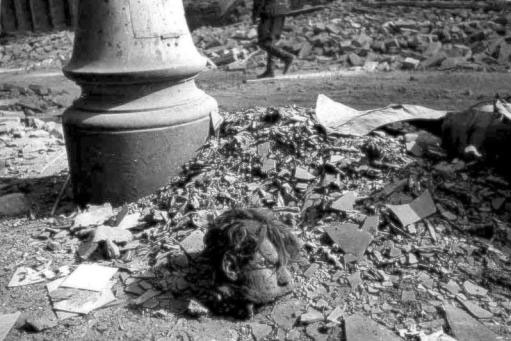
Bankers fund both sides of a war, reaping huge profits.
When World War One was declared there were street celebrations in most of Europe’s capital cities. No one envisaged the appalling casualties that occurred over the next four years of fighting. In August of 1914, Ypres was a well preserved medieval city. By 1918, it lay in ruins and the surrounding land had witnessed the death of tens of thousands. Russia lost 9.5M, France 6.1M, Great Britain 3.1M, Italy 2.1M, U.S.A. 350k. Total allied dead was approximately 22M. Germany lost 7.1M, Austria 7M, Turkey Bulgaria a combined total of 13.M with total losses of 15M. WWI ended with an estimated 37M deaths.
The total financial debt to the bankers during and after WWI for the allied powers was nearly 126B. The central powers debt came to approximately 61B.
Nobody would claim that a war as large as World War I would have a single cause. Wars are complex, having many causative factors. However, it would be equally as foolish to ignore as a primary cause of the war, those that would profit the most from the war. The role of the money changers is not a conspiracy theory. Bankers had the clearest motive to start the world war, a short-term profit motivating factor, and a long-range goal of advancing a totalitarian government, with the money changers maintaining financial clout to control whatever politician might emerge as the leader.
To the central bankers, the political issues don’t matter as much as the profit potential that arise from it, and nothing creates debt as much as a nation declaring war against another. Prior to WWI, power had been centralized on a global scale. Now it was time to wage war. A large, costly and destructive war. This was to be the first world war.
England was the perfect debt generating model of that time. During a one-hundred and nineteen years between the founding of the Bank of England, and Napoleon’s defeat at Waterloo, England had been at war for 56 years, and much of the remaining time was spent on preparing for war, and paying on the war debt.
During World War I, the German Rothschild cartel loaned money to Germany. The British Rothschild cartel loaned money to the British, and the French Rothschild cartel loaned money to France. In the U.S., J.P. Morgan was the sales agent for the war material to both the British, and the French. In fact, six months into the war, Morgan became the largest consumer on earth, spending 10 million dollars a day. His offices located at 23 Wall Street were mobbed by brokers, and salesmen trying to cut a deal. All Wall Street bankers made a fortune on the coming war. President Wilson appointed Bernard Baruch to head the wars industry board. According to historian James Perloff, both Baruch and the Rockefellers profited 200 million dollars from the war. Profits were not the only motive, there was also revenge against those that opposed centralizing banks wherever demanded. The money changers never forgave the Russian Czar for his support of Lincoln during the Civil War. Russia was also the last major European nation to refuse to kowtow to the privately owned central banking scheme.
Three years after WWI started, the banks money toppled the Russian Czar, and imposed communism, creating the Soviet Union. Jacob Schiff of Kuhn, Lobe and Company bragged from his deathbed that he had spent 20 million dollars toward the defeat of the Czar. Money was funneled from England to support the revolution. Why would the world’s richest financial institutions back communism, the system that was openly vowing to destroy capitalism, a system that had made them all wealthy? Author Gary Allen wrote,
“If one understands that socialism is not a share-the-wealth program, but is in reality a method to consolidate and control the wealth, then the seeming paradox of super-rich men promoting socialism becomes no paradox at all. Instead, it becomes logical, even the perfect tool of power-seeking megalomaniacs. Communism, or more accurately, socialism, is not a movement of the downtrodden masses, but of the economic elite.”
W. Cleon Skousen,
“Power from any source tends to create an appetite for additional power. It was almost inevitable that the super-rich would one day aspire to control not only their own wealth, but the wealth of the whole world. To achieve this, they were perfectly willing to feed the ambitions of the power-hungry political conspirators who were committed to the overthrow of all existing governments and the establishments of a central world-wide dictatorship.”
To keep powerful dictators in check, the bankers contracted the money supply, or financed their oppositions, if they got out of control. Lennon understood that, although he was the absolute dictator, of the Soviet Union, he was not the one pulling the financial strings. Vladimir Lenin stated,
“The state does not function as we desired. The car does not obey. A man is at the wheel, and seems to lead it, but the car does not drive in the desired direction. It moves as another force wishes.” Who was behind it? Louis T. McFadden explained it this way, “The course of Russian history has, indeed, been greatly affected by the operations of international bankers. The Soviet government has been given United States Treasury funds by the Federal Reserve Board acting through Chase Bank. England has drawn money from us through the Federal Reserve banks, and has re-lent it at high rates of interest to the Soviet government. The Dnieperstory Dam was built with funds unlawfully taken from the United States Treasury by the corrupt, and dishonest Federal Reserve Board and the Federal Reserve banks.”
In other words, the Feds and the heads of the Bank of England at the behest of the international bankers that controlled them created a monster. One that would fuel seven decades of communist revolution, warfare and death.
In 1992, the New York Times reported that Russian president Boris Yeltzin was upset that most of the incoming foreign aid was being siphoned, “Straight back into the coffers of western banks in debt service.”
XXIV. The Greatest of the Depressions
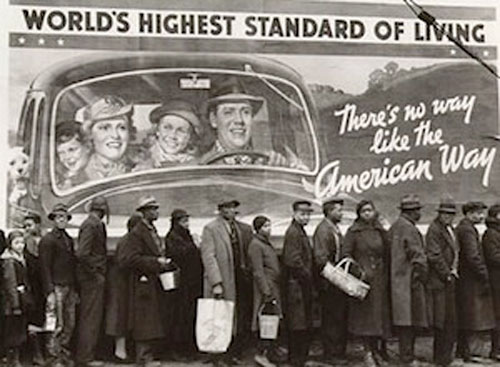
The Great Depression: America, the world’s highest standard of living.
According to former U.S. Federal Reserve chairman Ben Bernanke, the Great Depression was caused by the Federal Reserve System, and much of the economic damage was caused directly by bank runs.
Shortly after World War I, the political agenda of the bankers was apparent. Now that the bankers controlled the national economies, the next step was the ultimate form of consolidation, world government. The new world government proposal was given top priority at the Paris Peace Conference at the end of WWI. It was organized as the League of Nations, but much to the surprise of Paul Warburg, and Bernard Baruch, who attended the conference with President Wilson, the world was not ready to dissolve national boundaries. To the humiliation of President Wilson, the U.S. Congress would not ratify the league, despite the fact that it had been ratified by many other nations. Without the money flowing from the U.S. Treasury, the league died.
The American people grew tired of the international policies of Wilson, and the presidential election of the 1920’s, Warren Harding won a landslide victory with over 60% of the nation’s vote. Harding was a strident foe of both the Bolshevism, and the League of Nations. Harding’s election led to an unprecedented era of prosperity. During the election of 1920, Harding, and Calvin Coolidge ran against James Cox, the governor of Ohio, and the little known Franklin D. Roosevelt, who had previously risen to no higher post than President Wilson’s assistant secretary of the Navy. After his inauguration, Harding moved quickly to kill the League of Nations, and to reduce taxes, while raising tariffs to record heights. This was a revenue policy that most of the founding fathers would have approved.
The following eight years, under the presidency of Coolidge, and Harding, the ballooning federal debt that had built up during WWI was cut by 38%, to 16 billion dollars. This was to be the greatest drop in national debt in U.S. history.
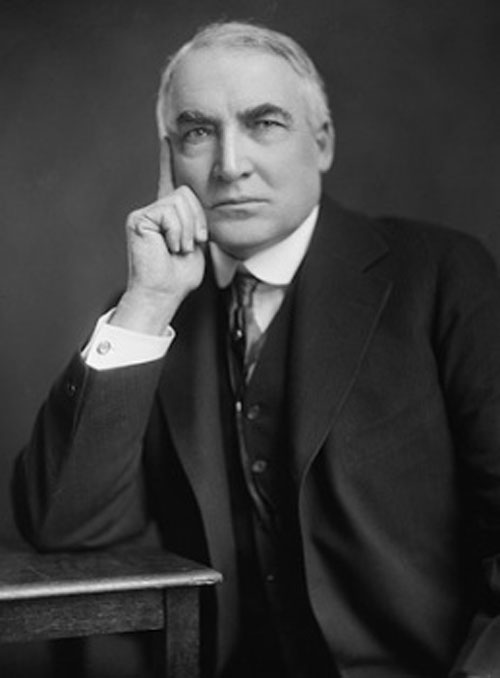
Warren G. Harding, 29th President of the U.S.
During his second year in office, Harding took ill during a rail trip west, and suddenly died. Although, no autopsy had ever been performed, the cause was said to be either pneumonia, or food poisoning. When Coolidge took over he continued Harding’s domestic policy, of high tariffs on imports, while cutting income taxes. As a result, the economy grew at such a rate, that net economy continued to increase. To the bankers, this had to be stopped. It was time for the bankers to crash the economy. Within minutes of Harding’s death on August 2, 1923, rumors began to circulate. No one seemed sure who was with him in the San Francisco hotel room where he breathed his last breath. The four physicians who had been caring for Harding could not agree on the cause of death. It had something to do with his heart. On the other hand, perhaps it was a stroke. Alternatively, it could have been both, exacerbated by the ptomaine poisoning that he may, or may not have experienced a few days earlier in Vancouver. Despite the confusion over the time of death, surely an autopsy would resolve the uncertainty about what killed the president.
The Federal Reserve flooded the country with money, and increased the supply by 62% during those years. This period became known as the, Roaring 20’s. Before his death in 1919, former president Theodore Roosevelt warned the American people what was going on, as reported in the March 27th, 1922 edition of the New York Times. Roosevelt said,
“These international bankers and Rockefeller-Standard Oil interests control the majority of newspapers, and the columns of these papers to club into submission or drive out of public office officials who refuse to do the bidding of the powerful corrupt cliques, which compose the invisible government.” The day before this article was printed, the mayor of New York quoted Roosevelt, and blasted those as he saw taking control of America, its machinery and its press. John Hylan, Mayor of New York. New York Times, March 26th, 1922 wrote, “The warning of Theodore Roosevelt has much timeliness today, for the real menace of our republic is the invisible government which like a giant octopus sprawls its slimy length over city, state, and nation. It seized in its long and powerful tentacles our executive officers, our legislative bodies, our schools, our courts, our newspapers, and every agency created for the public protection. To depart from mere generalizations, let me say that at the head of this octopus are the Rockefeller-Standard Oil interest, and a small group of powerful banking houses generally referred to as the international bankers. The little coterie of powerful international bankers virtually run the United States government for their own selfish purposes. They practically control both parties, write political platforms, make catspaws of party leaders, use the leading men of private organizations, and resort to every device to place in nomination for high public office only such candidates as will be amenable to the dictates of corrupt big business. These international bankers and Rockefeller-Standard Oil interests control the majority of the newspapers and magazines in this country.”
Nobody listened to these staunch warnings, and the demands on congress to reverse its 1913 passage of the Federal Reserve Act fell on deaf ears. After all, it was the 1920’s, and the bankers had flooded the market with money, and the economy showed a steady increase in the markets. In times of prosperity, nobody wants to worry about economic issues. However, there was a dark side to all of this prosperity. Businesses had expanded, and were strapped with credit. Speculating of the booming stock market was rampant.
In April of 1929, Paul Warburg the father of the Federal Reserve sent out a secret advisory, warning his friends that an economic collapse was imminent, and a nationwide depression was certain. In August of that year, the Fed began tightening the money supply. It’s not a coincidence that the biographies of all the Wall Street giants of that era, J.D. Rockefeller, J.P. Morgan, Bernard Baruch, Joseph Kennedy, all marveled that they got out of the stock market just prior to its crash, and placed all their assets in gold, or other investments.
On October 29t 1929, the largest New York bankers called in their 24-hour broker call loans. This meant that both stockbrokers, and customers had to dump their stocks on the market to cover their loans, no matter what price they had to sell them at. The market tumbled. That day is known as Black Thursday. At the height of the selling frenzy, Bernard Baruch brought Winston Churchill in to the visitor’s gallery at the New York Stock Exchange to witness the panic, and to impress him with Baruch’s power over the events transpiring down over the floor.
Congressman Louis McFadden chairman over the House Banking and Currency Committee, from 1920 until 1931, knew who to blame, he accused the Fed and the international bankers of orchestrating the crash.
“It was not accidental. It was a carefully contrived occurrence. The international bankers sought to bring about a condition of despair here so that they might emerge as rulers of us all.”
McFadden openly accused the bankers of causing the crash in order to steal America’s gold. In February of 1931, right in the middle of the depression he stated,
“I think it can hardly be disputed that the statesman, and financiers of Europe are ready to take almost any measure to reacquire rapidly the gold stock which Europe lost to America as the result of World War I.”
Curtis B. Dall, a broker for the NYSE was on the floor the day of the crash, in his 1970 book, Roosevelt, My Exploited Father In Law, he explained that the crash was triggered by the planned sudden shortage of call money in the New York money market.
“Actually, it was the calculated shearing of the public by the World-Money powers triggered by the planned sudden shortage of call money in the New York Money Market.”
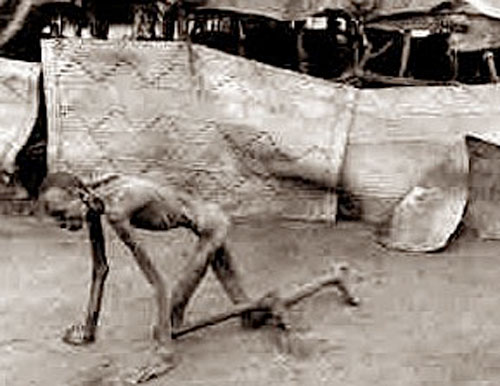
An emaciated, and starving man photographed during America’s Great Depression.
Within a few weeks, 3 billion dollars of wealth seemed to simply vanish. Within a year 40 billion had been lost. Did that money really disappear, or did it merely consolidate into fewer hands? Joseph P. Kennedy’s worth grew from 4 million dollars in 1929 to over 100 million dollars by 1935. What did the Federal Reserve do? Instead of moving to help the economy, by quickly lowering interest rates, to stimulate the economy, the Fed continued to brutally contract the money supply further, which deepened the depression. Between 1929, and 1933 the Fed reduced the money supply by an additional 33%. Although most Americans had never heard the Fed was the cause of the depression. This remains well reported amongst the world’s top economists. Milton Friedman, the Nobel Prize winning economist, and professor at Stanford University noted during a radio interview in 1996. “The Federal Reserve definitely caused the Great depression by contracting the amount of currency in circulation by one-third from 1929 to 1933.”
The money lost during the depression had not just vanished, it had simply redistributed into the hands of the people who had gotten out of the market, just prior to the crash, and had purchased gold, which is always considered a safe place to put money before a depression. America’s money went overseas, as president Hoover had attempted to rescue banks, and prop up businesses. Millions of Americans starved to death as the depression deepened. Instead of investing in the U.S., bankers used depression era profits to rebuild the WWI destruction of Germany that the bankers had caused. Rep. Louis McFadden warned congress that they were the cause of Hitler’s rise to power.
“After WWI, Germany fell into the hands of the international bankers. Those bankers now own her, lock, stock, and barrel. They have stolen her industries, they have mortgages on her soil, they control her productions, they control all her public utilities. Through the Federal Reserve Board over 30 billion of American money has been pumped into Germany. You have all heard of the spending that has taken place in Germany, modernistic dwellings, her great planetariums, her gymnasiums, her swimming pools, her fine public highways, her perfect factories. All this was done with our money. All this was given to Germany through the Federal Reserve Board. The Federal Reserve has pumped so many billions into Germany that they dare not name the total.”
The policies of the Third Reich, prior to WWII was the ousting of international bankers, the removal of their control over the media, and Germany printing their own money. Very quickly Germany’s money became the hottest commodity in the finance industry. It is hard to imagine that a mere few years earlier one couldn’t purchase a loaf of bread with a barrel full of the money that the bankers had created.
In his last year in office president Hoover put forth a desperate plan to bail out the failing banks, but he needed support from the Democratic congress, and he wasn’t about to get it. That same year Franklin D. Roosevelt was swept into office during the 1932 presidential election. Once Roosevelt was in office, sweeping emergency banking measures were announced. Then, and only then did the Fed begin to expand money into the economy, and the starving American people.
XXV. FDR and the Theft of America’s Gold

Franklin Delano Roosevelt, 32nd President of the U.S.
The legacy of the Delano family began with their involvement in the opium trade, and the First Opium War, also known as the Opium War and the Anglo-Chinese War, was fought between the United Kingdom and the Qing dynasty over their conflicting viewpoints on diplomatic relations, trade, and the administration of justice for foreign nationals in China. China’s emperors discovered the devastating effect of opium on the nation’s population and attempted to ban the importation of opium into the Middle Kingdom in the early 19th Century. Backed by their own governments, Western traders ignored Chinese concerns and demands, and continued to flood the country with opium. The drug kingpins enlisted their governments to back them up with military force, reaping huge profits in the process. Most of these traders were British, but a significant number were American, and the profits they made were the cornerstone of some of 19th Century America’s greatest fortunes.
John Jacobs Astor was America’s first multimillionaire, who had participated in the opium smuggling trade in 1816 when his American Fur Company bought 10 tons of Turkish opium, and smuggled it into Canton. Astor became the first American known to have entered the contraband Chinese opium trade.
John and Robert Forbes worked for Perkins & Co. in its China trade. While their job was to secure quality tea for export, they were more intimately involved in the importation of opium. The brothers’ activities in the opium trade led to the Forbes family’s accumulated wealth. The most notable family member today is the current Secretary of State John Forbes Kerry.
Samuel Wadsworth Russell started as an orphaned apprentice to a maritime trade merchant. He eventually founded Russell and Co., the most powerful American merchant house in China for most of the second half of the 19th Century. Russell landed in Canton in 1819, and quickly amassed a fortune in the opium trade. Russell’s cousin, and fellow opium trader, William Huntington Russell, was a co-founder, and funder of Yale University’s Skull and Bones Society.
Thomas Handasyd Perkins, a wealthy merchant, and Boston Brahmin par excellance, made his trading debut selling slaves in Haiti. He also peddled furs to China from the American Northwest before amassing a huge fortune smuggling Turkish opium into China. Although he got rich off the trade, he avoided mentioning it, and his official biography, written by his son-in-law, never mentions his involvement in opium.
Warren Delano, Jr., the grandfather of Franklin Delano Roosevelt, was chief of operations for Russell & Co., a Boston trading firm which did big business in the China opium trade in Canton. Delano Jr. spent a decade as a dealer, selling opium on the Pearl River before returning to New York as a wealthy, and eligible bachelor. He admitted in letters home that opium had an “unhappy effect” on its users, but argued that its sale was “fair, honorable, and legitimate,” akin to importing wine, and spirits to America. Delano lost his fortune in the Great Panic of 1857, but returned to China, and rebuilt it by supplying the U.S. military with opium to treat Union soldiers in the Civil War. Today, the Delano’s don’t discuss their ancestor’s involvement in the opium trade. As FDR biographer Geoffrey C. Ward noted, “In a family fond of retelling, and embellishing even the mildest sort of ancestral adventures, no stories seem to have been handed down concerning Warren Delano’s genuinely adventurous career in the opium business.”
Franklin Delano Roosevelt has been called an American hero. In reality, FDR was a New York banker, who had conspired with the FED to outlaw, and confiscate all gold that remained privately held. The guise of this theft was to prop up the American economy. The result was a scheme to further impoverish the American people.
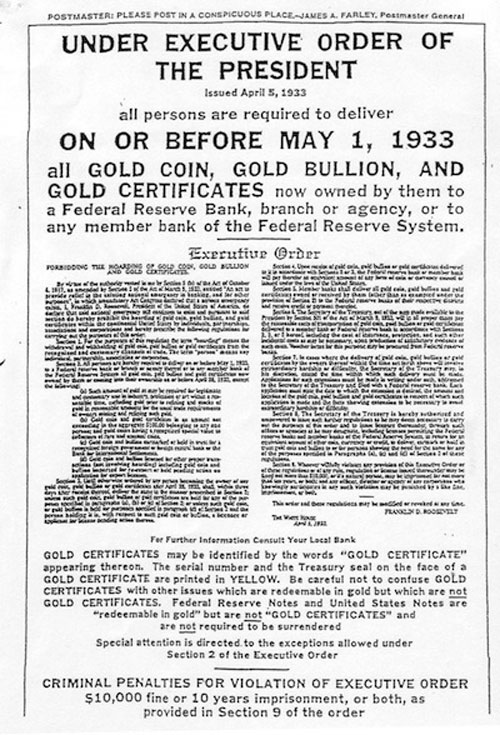
The Gold Confiscation Act of 1933, was a ruse to confiscate America’s wealth, and consolidate it into the hands of a few international bankers.
On, March 4th, 1933, Roosevelt’s inaugural address included the following statement, “Practices of the unscrupulous money changers stand indicted in the court of public opinion, rejected by the hearts and minds of men. The money changers have fled from their high seats in the temple of our civilization.” Two days later Roosevelt declared a bank holiday, closing all banks. Later that same year he outlawed private ownership of all gold bullion, and all gold coins. This new decree was, in effect a confiscation of private, and personal assets. Those that did not comply, risked as many as ten years in federal prison, and a 10,000 dollar fine, the equivalent of more than a 140,000 dollar fine today.
So unpopular was the confiscation order that no government official took credit for it. No congressman admitted to signing the bill into law. At the signing ceremony President Roosevelt stated that he was not the author of the bill, and even claimed that had not even read it. The secretary of the treasury said he had not read the bill either. Regardless, the secretary was quoted as saying, “It’s what the experts wanted.” Across the small towns of America, most people didn’t trust the order. People were torn between keeping their hard-earned wealth, and obeying the government. Those that did turn in their gold were paid the official price for it, which was 20.66 USD per ounce. As of this writing, the price of one ounce of gold trades for 1,264.59 USD.
With great fanfare Roosevelt ordered a new bullion depository, that would hold the mountain of gold the U.S. government was confiscating from those that owned it. By 1936, the gold bullion depository at Fort Knox was completed. By January of 1937, gold began to flow into it. The greatest theft of individual wealth that had ever occurred was under way. Once people turned in their gold, the official price suddenly spiked to 35.00 USD an ounce. The money changers that heeded Warburg’s warning, and go out of the markets before it bottomed out, purchase gold at 20.66 per ounce, then shipped it to London, and were able to sell it back to the government for nearly double the amount it was purchased for. As this financial fraud continued, the average American who had turned their gold in began to starve.
Executive Order 6102 was a United States presidential executive order signed on April 5th, 1933, by President Franklin D. Roosevelt. This order forbade the hoarding of gold coin, gold bullion, and gold certificates within the continental United States. The effect of the order, in conjunction with the statute under which it was issued, was to criminalize the possession of monetary gold by any individual, partnership, association or corporation.
The stated reason for the order was that hard times had caused, “hoarding” of gold, stalling economic growth and making the depression worse,” according to a New York Times article released on April 6th, 1933. The article headline read, “Hoarding of Gold“, “The Executive Order issued by the President yesterday amplifies, and particularizes his earlier warnings against hoarding. On March 6, taking advantage of a wartime statute that had not been repealed, he issued Presidential Proclamation 2039 that forbade the hoarding ‘of gold or silver coin or bullion or currency,’ under penalty of $10,000 and/or up to five to ten years imprisonment.”
The rationale behind the order was to remove the constraint on the Federal Reserve, which prevented it from increasing the money supply during the depression. The Federal Reserve Act had required 40% gold backing of Federal Reserve Notes issued. By the late 1920s, the Federal Reserve had almost hit the limit of allowable credit that could be backed by the gold in its possession. If gold could not be legally owned, then it could not be legally redeemed. If it could not be legally redeemed, then it could not constrain the central bank.
Executive Order 6102 required all persons to deliver on or before May 1st, 1933, all gold coin, gold bullion, and gold certificates owned by them. That gold was to be turned over to the Federal Reserve, in exchange for $20.67 per troy ounce.
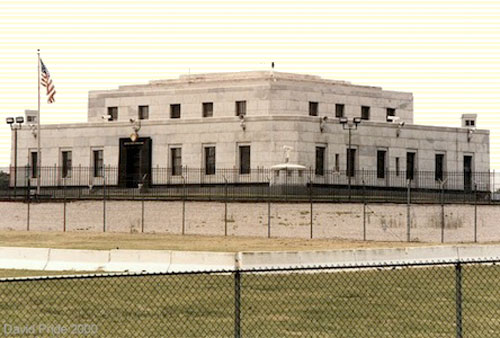
Fort Knox, Kentucky.
When the gold began arriving at Fort Knox on January 13th, 1937, there was unprecedented security, thousands of official watched its arrival on a nine car train from Philadelphia. The train was guarded by armed soldiers, postal inspectors, secret service, and guards from the U.S. mint. In reality it was nothing more than great theater. America’s gold supply was supposed to be stored at Fort Knox, but all that security would soon be breached by the government itself.
At the end of World War II, Fort Knox vaults contained more than 700 million ounces of gold, about 70% of the gold in the world. How much gold remains at Fort Knox today? Despite the fact that federal law requires an annual physical audit of all the gold held at Fort Knox, the U.S. treasury consistently refuses to conduct one. The truth is there has been no reliable audit of the gold held at Fort Knox since President Eisenhower ordered one in 1953.
Where has all that gold gone? It is thought that the gold was sold off to European interests at 35.00 an ounce. This was done at a time when it was illegal for Americans to purchase any of the gold stored at Fort Knox. In the late 1970’s, the family of the Firestone Corporation set up a string of dummy corporations in a scheme to purchase the Fort Knox gold, and store it in Swiss banks. The Firestones were unsuccessful, and ended up being prosecuted.
By 1971, the nations gold that had been held at Fort Knox was secretly removed, and taken to London. Once all of the gold was gone from Fort Knox, President Nixon repealed President Roosevelt’s Gold Act, making it once again permissible for Americans to purchase gold. As a result, gold prices immediately soared. Nine years later, gold prices reached 880.00 USD per ounce, 25 times higher than the value of the gold that had been stored at Fort Knox.
The largest fortune in the history of the world was stolen, with not one government official blowing a whistle on the scheme. How did looting of Fort Knox finally become public knowledge? An article in a New York periodical in 1974, charged the Rockefeller family for manipulating the federal reserve to sell off Fort Knox gold at bargain prices to anonymous European speculators. Three days later the anonymous source of the story, Louise Boyer mysteriously fell to her death from the 10th floor of her apartment in New York. How did Ms. Boyer gain knowledge about the greatest crime ever perpetrated against the American people? Boyer was the long time personal secretary of Nelson Rockefeller.
For the next fourteen years, Ed Durell, a wealthy Ohio industrialist devoted himself to learn about what happened to the gold of Fort Knox. Durrell went on a one-man campaign. He sent thousands of letters to government officials, demanding to know what gold remained at Fort Knox. Edith Roosevelt, the grand-daughter of President Roosevelt wrote,
“Allegations of missing gold from our Fort Knox vaults are being widely discussed in European financial circles. But what is puzzling is that the Administration is not hastening to demonstrate conclusively that there is no cause for concern over our gold treasure, if indeed it is in a position to do so.”
Durrell never accomplished his primary goal, which was for the government to perform a full audit of the gold reserve at Fort Knox. The U.S. government could do away with all of the speculation by auditing the Fort Knox gold in the public light. Regardless, the government has chosen not to do so. This implies the government is fearful to discover what such an audit would reveal. When Ronald Reagan took office in 1981, his conservative friends urged him to study the feasibility of returning to a gold standard, as the only way to curb government spending. Reagan appointed a Gold Commission to study the situation, who was to report to congress. In 1982, the Gold Commission reported back to Reagan a shocking revelation concerning the gold. Texas Rep. Ron Paul, suggested America’s reserves were not as robust as officials were claiming, and has called for an independent audit of the U.S. gold held at Fort Knox, and other storage facilities. Paul is known for his fierce opposition to virtually everything the Federal Reserve stands for. “It’d be nice for the American people to know whether or not the gold is there,” Paul told Fox Business Network. And if there is any gold at Fort Knox, Paul said, the public should know whether any of it has been obligated. Most believe there is no gold at Fort Know. The gold that was stolen from the American people, and which was said to be stored at Fort Knox has most likely been transferred to the Federal Reserve.
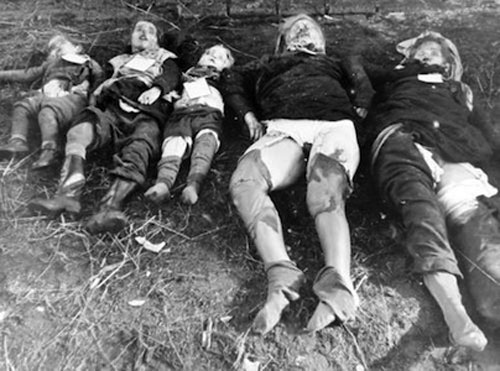
Children unable to fend for themselves are the casualties of the banker’s war profits.
After WWII, the world was divided into two economic camps. Communism on the one hand, versus monopoly capitalism on the other. Both sides were set to fight it out in a perpetual, and highly profitable arms race. During this period, it would finally be time for the central bankers to embark on their three-step plan to centralize the economic system of the entire world, and finally bring about their global government, and their new world order.
- A worldwide central bank domination of national economies.
- Centralize regional economies through organizations such as the European Monetary Union, and regional trade unions like NAFTA.
- Centralize the world economy through a World Central Bank, and do away with all international tariffs and treaties like GATT.
Step One was completed long ago. Step two and three are well into the advanced stage of completion. The largest holder of gold today is the International Monetary Fund. The IMF, and other centralized banks control more than two-thirds of the world gold supply. This gives the bankers the ability to manipulate the world’s gold supply, and valuation.
The stage was set for a new world war. A war that would pile up debt like the world had never seen before. The war spending of WWII would be thirty times higher than the war spending of World War I. The American taxpayer who were bilked of their wealth paid 55% of the total allied expense of the war. Every nation involved in World War II greatly multiplied their debt. In the U.S., federal debt went from 43 billion in 1940, up to 257 billion in 1950, an increase of 598%. Between 1940 and 1950, Japanese debt swelled 1348%, French debt grew 583%, Canadian debt soared 417%.
XXVI. The International Monetary Fund and the World Bank
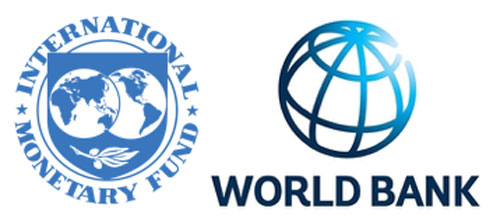
The IMF, and the World Bank were created at the Bretton Woods conference in 1944.
After World War I, under the guise of peace making, international bankers devised a plan to consolidate power even further. Claiming only an international government would stem the tide of world wars the bankers pushed for a world government that stood on three legs. A central bank to be called the Bank of International Settlements. A world judiciary to be called the World Court located in The Hague of the Netherlands, and a world executive, and legislative body called the League of Nations. President Clinton’s mentor Georgetown Historian, Carroll Quigley, wrote in his 1966 book, Tragedy and Hope,
“The powers of financial capitalism had a far-reaching plan, nothing less than to create a world system of financial control, in private hands, able to dominate the political system of each country and the economy of the world as a whole. This system was to be controlled in a feudalist fashion by the central banks of the world, acting in concert by secret agreements arrived at in frequent meetings, and conferences. The apex of the system was to be the Bank for International Settlements in Basel, Switzerland, a private bank owned, and controlled by the world’s central banks which were themselves private corporations. Each central bank sought to dominate its government by its ability to control treasury loans, to manipulate foreign exchanges, to influence the level of economic activity in the country, and to influence cooperative politicians by subsequent economic rewards in the business world.”
Despite intense pressure from the international bankers, and the press they controlled, a handful of senators, led by Henry Cabot Lodge, kept the U.S. out of these schemes. Without U.S. participation the system was doomed. Incredibly, even though the U.S. rejected the world central bank, the New York Federal Reserve ignored its government and arrogantly sent representatives to Switzerland to participate in the central banker’s meetings, right up until 1994, when the U.S. was finally and officially dragged into it.
The bankers resorted to the old formula, another war to wear down the resistance to one world government, while reaping hefty profits. To this end, Wall Street helped resurrect Germany, through the Thisen banks that were closely connected to the Harriman interest in New York, just as the Chase Bank had assisted in the financing of the Bolshevik Revolution during World War I. Chase Bank was controlled by the Rockefeller family. Subsequently, it was merged with Warburg’s Manhattan Bank to form the Chase-Manhattan Bank. Then Chase-Manhattan merged with Chemical Bank of New York, making it the largest Wall Street bank during its time. Their strategy was working, even before World War II was over. A world government was on track.
In 1944, in Bretton Woods, New Hampshire, the International Monetary Fund, and the World Bank were approved with full U.S. participation. The Second League of Nations, renamed the United Nations was approved in 1945. Soon a new international court system was functioning. All effective opposition to these newly formed organizations prior to the war, subsequently evaporated during the war. These organizations were repeating on a world scale, what the National Banking Act of 1864, and the Federal Reserve Act of 1913 had established in the U.S. They created a banking cartel composed of all the world’s central banks, which gradually assumed the power to dictate credit policies to the banks of all the nations.
Just as the Federal Reserve Act authorized the creation of a new national fiat currency called federal reserve notes, the International Monetary Fund has been given the authority to issue a world fiat money called special drawing rights. The IMF created an excess of 30 billion dollars of special drawing rights. Member nations have been pressured to make their currency fully exchangeable for SDR’s.
In 1968, congress approved laws authorizing the Fed to accept SDR’s as reserves in the U.S., and to issue federal reserve notes in exchange for SDR’s. This meant in the U.S. SDR’s are already a part of the nation’s lawful money. SDR’s are partially backed by gold as well, and with two-thirds of all the world’s gold in the hands of the international bankers, the money changers can go about structuring the world’s economic future in any way they deem most profitable. Just like the Fed is controlled by its board of governors, the IMF is also controlled by its board of governors, which are either the heads of the difference central banks or the heads of the various national treasury departments dominated by their central banks.
Voting power in the IMF gives the U.S. Federal Reserve, and England’s Bank of England effective control. Just as the Fed controls the amount of money in the U.S., the BIS, IMF and the World Bank control the money supply for the world. So, the repetition of the old goldsmith’s fraud, replicated on the national scale, with central banks like the Fed, and on the international scale, by the three arms of the international central bank. Regulation put into effect in 1988, by the BIS, required the world bankers to raise their capital to 8% reserve of liability by 1992. This increase of capital requirement put an upper limit to the fractional reserve lending practices similar to the way cash reserve requirements do. What does this regulation that was made in a Swiss city mean to the world? It means that banks cannot loan more, and more money to buy more, and more time before the next depression, as a maximum loan ratio is now set. It means those nations with the lowest bank reserves in their systems have already felt the terrible effect of this monetary contraction as their banks scramble to raise money to increase their reserves to 8%. To raise money, nations had to sell stocks, which depressed those nation’s stock markets, and initiated depressions in those countries.
In 1988, Japan had one of the lowest capital reserve requirements, and was the most effected by the regulation, and suffered a financial crash that began almost immediately. This requirement wiped out nearly 50% of the value of its stock market since 1990, and 60% of the value of its commercial real estate. The Bank of Japan responded by lowering its interest rate to one half of one percent, practically giving away money to resurrect the economy. Regardless, the depression still worsened.
Due to the 20-billion-dollar bailout by the U.S. to Mexico, the financial collapse of that nation was already felt in the U.S. Despite the bailout, the economy continues to be a disaster, as one huge debt is rolled over, while new loans are being created merely to cover the interests Mexico must pay on the old loans. In the south of Mexico every spare peso had been siphoned out of the nation to make those interest payments. It’s important to note that radical power exchanges are taking place, as nations become subservient to a super powerful world central bank, controlled by a handful of the world’s richest bankers.
As the IMF creates more, and more SDR’s by the stroke of a pen on IMF ledgers, more, and more nations borrow to pay the interest on their mounting debt. Eventually, nations fall under complete control of the faceless bureaucrats of the world central bank. As the world-wide depression worsen and spreads, this gives the world banks the power of economic life, and death of a nations people, as it alone decides what nations are permitted to receive further loans of the SDR’s, and which nations will not.
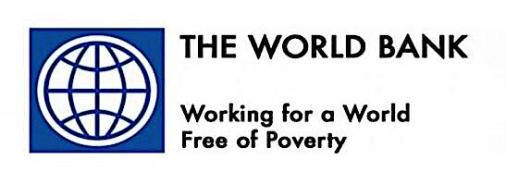
Despite the World Bank’s claim of working to end the world of poverty, the bank itself is the root cause of economic global depression, economic instability, and starvation.
Regardless of the rhetoric about development, and alleviation of poverty, the result is a steady transfer of wealth from debtor nations to the central banks, which control the IMF, and the World Bank. Just as in the wars these bankers start, and finance, the victim’s of the international bankers are the children of this world. The World Bank uses the motto: Ending poverty and sharing prosperity.
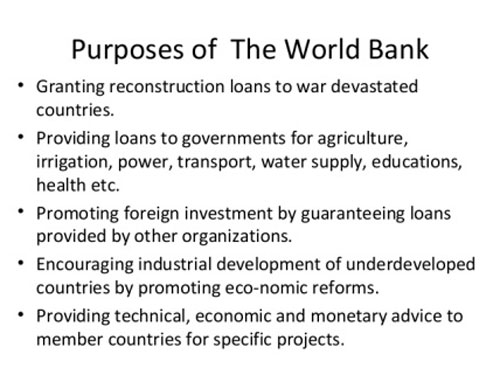
In 1992, third world debtor nations, which borrowed from the World Bank, paid 198 million dollars more to the central bank of the developed nations, for world bank funded purposes, than they received from the world bank. All this increased these nations permanent debt in exchange for temporary relief from poverty, which in reality is caused from prior borrowing. Payments also greatly exceed the amount of new loans. By 1992, Africa’s external debt reached 290 billion dollars, 2.5 times greater than in 1980 resulting in skyrocketing infant mortality rates, unemployment, deterioration of schools, housing, and the general health of the nation’s people.
The entire world is now facing the same suffering that had destroyed third world nation’s, as well as Japan’s economy. The only ones that benefit from these arrangements are the international bankers who are responsible for all of this suffering. A prominent Brazilian politician stated,
“The third world war has already started. It is a silent war. Not, for that reason, and less sinister. The war is tearing down Brazil, Latin America, and practically all the Third World. Instead of soldiers dying, there are children. It is a war over the Third World debt, one which has as its main weapon, interest, a weapon deadlier than the atom bomb, more shattering than a laser beam.”

Starvation is the result of the IMF, and World Bank’s policy toward third world nations.
XXVII. Finale
It would be absurd to ignore the pivotal role played by influential families such as the Rothschild’s, Warburg’s, Schiff’s, Morgan’s and Rockefeller’s. Central banks, and large commercial banks are up to three centuries old, and deeply entrenched in the economic struggle of the people of most nations.
Years ago, the question of ownership was important but no longer. For example, both the Bank of England, and the Bank of France were nationalized after World War II, and nothing changed. These banks endure, and continue to grow, protected by laws, politicians on the take, and the media that is owned and controlled by them. These people, and their offspring remain untouched by the changing of generations. Three centuries falsely give an aura of respectability to the sixth generation, raised in a system not to be questioned, as they front countless philanthropic organizations, which are cash cows themselves.
To focus attention today on individuals or families, or to attempt to sort out the current holders of power serves little useful purpose, and is a distraction from what would cure the problems of perpetual debt. The corrupt banking system that has been used to consolidate vast wealth into fewer, and fewer hands remains all of the nation’s of the world’s economic problems. Change the names of the main players, the problem will neither go away, nor even miss a beat. Likewise, of the hordes of bureaucrats working in the world bank, central banks, and international banks, only a tiny fraction have any idea of what’s really going on. Would they even be concerned to discover that their work contributes to the impoverishment, and gradual enslavement of mankind to a few incredibly rich plutocrats?
There is no use in emphasizing the role of individuals anymore. The problem transcends the spectrum of the political right and left. Communism, socialism, as well as monopoly capitalism, are all tools of the money changers. Today, they profit from either side of a political spectrum. The big government welfare state of the left-wing, versus the neo-conservative laissez-faire capitalists who want big government out of their lives are nearly entirely controlled by the bankers. Whether a boom economy, or a world collapse, the bankers win.
Monetary reform is the most important political issue facing the world today. With that clarified, lets proceed to the conclusion of this essay in the spirit that Lincoln declared. “With malice towards none, with charity towards all.”
The most important monetary questions that need to be addressed today are:
- What’s going on with the world’s economy today?
- Why is the U.S, the wealthiest nation in the world buried in massive debt?
- Why can’t politicians bring the debt crisis under control?
Why are Americans over their heads in debt? Because they are laboring under a debt money system that is designed, and controlled by private bankers to keep them in that state. Some will argue that the federal reserve system is a quasi governmental agency, but the president appoints only two of the seven members of the federal reserve board of governors every four years, and he appoints them to fourteen year terms, far longer than his own. The senate confirms those appointments, but the president wouldn’t dare appoint anyone to that board if Wall Street did not approve. This does not preclude the possibility that some honorable men may be appointed to the board of governors, but the fact is that the fed is specifically designed to operate independently of our government, as are all central banks. Some argue that the Fed promotes monetary stability. Eddie George, the head of the Bank of England, claimed that monetary stability was the most important role of a central bank. If this is factual, then the Feds record of stabilizing the economy shows it to be a miserable failure. Within the first twenty-five years of its existence, the Federal Reserve Bank caused three major economic down cycles, including, The Great Depression, and for the last thirty years has shepherded America’s economy into a period of unprecedented inflation.
Nobel prize-winning economist Milton Friedman stated,
“The stock of money, prices and output was decidedly more unstable after the establishment of the Reserve System than before. The most dramatic period of instability in output was, of course, the period between the two wars, which includes the severe monetary contractions of 1920-21, 1929-33, and 1937-38. No other 20-year period in American history contains as many as three such severe contractions. This evidence persuades me that at least a third of the price rise during, and just after World War I, is attributable to the establishment of the Federal Reserve System, and that the severity of each of the major contractions is directly attributable to acts of commission, and omission by the Reserve authorities. Any system which gives so much power, and so much discretion to a few men, so that mistakes, excusable or not, can have such far-reaching effects, is a bad system. It is a bad system to believers in freedom just because it gives a few men such power without any effective check by the body politic, this is the key political argument against an independent central bank. To paraphrase Clemenceau, money is much too serious a matter to be left to the central bankers.”
We must learn from our history before it is too late. Why can’t politicians control the federal debt? Because all money in America is created out of debt. America’s economy is a debt money system. America’s money is initially created by the purchase of U.S. bonds. The public buys those bonds. The banks buy those bonds, foreigners buy them, and when the Fed wants to create more money in the system, it buys bonds, but pays for them with a simple book-keeping entry which it creates out of nothing. Then this new money, created by the Fed is multiplied by a factor of ten, by the banks, due to the fractional reserve principle. Although the banks don’t create currency, they do create check book money, or deposits by making new loans. They even invest some of this created money. Over 1 trillion dollars of this privately created money has been used to purchase U.S. bonds on the open market, which provides the banks with roughly 50 billion dollars in interest, risk free, each year, less the interest they pay to some depositors. In this way, through fractional reserve lending, banks create over 90% of the money, and therefore cause over 90% of our inflation. What should we do about all this?
There is a way to fix the problem fairly easily, speedily, and without any serious financial problems. America can get completely out of debt in one to two years by simply paying off U.S. bonds with debt free U.S. notes, like that that Lincoln issued. Of course, that by itself would create tremendous inflation since our currency is multiplied by the fractional reserve banking system. To keep the money supply stable, and avoid inflation, and deflation as the debt is retired, the treasury would purchase its bonds on the open market with U.S. notes. The reserve requirements of a local bank would be proportionally raised, so the amount of money in circulation remains constant. As those holding bonds are paid off in U.S. notes, they would also deposit that money, thus making available the currency needed by the banks to increase their reserves. Once all the U.S. bonds are replaced with U.S. notes, banks will be at 100% reserve banking instead of the fractional reserve system currently in use. From this point on the former Fed buildings will only be needed as a central clearing house for checks, and as vaults for U.S. notes. The federal reserve act will no longer be necessary and should therefore be repealed. Monetary power would then be transferred back to the treasury department. There would be no further creation, and contraction of money by banks. This is the only way America’s national debt could be paid off. The Fed, and fractional reserve banking should then be abolished without national bankruptcy, financial collapse, inflation or deflation, or any significant change in the way the average American goes about his business. To the average person, the primary difference would be that for the first time since the Federal Reserve Act was passed, taxes would begin to go down.
The following are the main provisions of a monetary reform act, which needs to be passed by congress.
- Pay off the debt with debt free U.S. notes. As Thomas Edison put it, “If the U.S. can issue a dollar bond, it can issue a dollar bill.” They both rest purely on the faith, and credit of the United States government. This amounts to a simple substitution of one type of government obligation for another. One bears interest, the other doesn’t. Federal reserve notes could be used for this purpose, and should not be printed after the Fed is abolished.
- Abolish Fractional Reserve Banking. As the debt is paid off, the reserve requirements of all banks, and financial institutions could be raised proportionally, to absorb the new U.S. notes, which would be deposited and become the banks increased reserves. Towards the end of the first year of the transition period, the remaining liabilities of financial institutions would be assumed or acquired by the U.S. government. In other words, national financial debt would be paid off with debt free U.S. notes so as to keep the total money supply stable. Shortly, all of the national debt would be paid, and Americans would start enjoying the benefits of full reserve banking.
- Repeal, The Federal Reserve Act of 1913, and The National Banking Act of 1864. These acts delegate the money power to a private banking monopoly. They must be repealed, and the money power handed back to the Department of Treasury where they were under President Abraham Lincoln. No banker, or anyone affiliated with financial institutions should be allowed to regulate banking. After initiating the first two reforms, these acts would serve no useful purpose anyway, since they relate to a fractional reserve banking system.
- Withdraw the U.S. from the IMF, the BIS, and The World Bank. These institutions like the federal reserve, are designed to further centralize the power of the international bankers over the world’s economy, and the U.S. must withdraw from them. Their functions such as currency exchange could be accomplished nationally, or in new organizations limited to those kind of exchanges.
A monetary reform act like the one presented above would guarantee that the amount of money in circulation would remain stable, resulting in neither inflation, nor deflation.
For the last three decades, the Fed has doubled the American money supply every ten years. That fact, and fractional reserve banking are the real causes of inflation, and the reduction in our buying power, a hidden tax. These and other taxes are the real reasons both parents have to work just to get by. The money supply should increase slowly to keep prices stable, roughly in proportion to population growth, about 3% per year. Not at the whim of a group of bankers meeting in secret. In fact, all future decisions on how much money will be in the American economy must be made based on statistics of population growth and the price level index.
The new monetary regulators and the Treasury Department, perhaps called the Monetary Committee, would have absolutely no discretion in this matter except in time of declared war. This would ensure a steady stable money growth of roughly 3% per year, resulting in stable prices, and no sharp changes in the money supply. To make certain the process is completely open, and transparent, all deliberations should be public, not secretive, as meetings of the Feds board of governors are today.
The two major causes of economic instability are The Fed, and fractional reserve banking, along with the creation of the Bank of International Settlements. Most importantly, the danger of a severe depression would be eliminated. Milton Friedman discusses the single cause of severe economic depressions, “I know of no severe depression, in any country or any time, that was not accompanied by a sharp decline in the stock of money, and equally of no sharp decline in the stock of money that was not accompanied by a severe depression.”
Issuing our own currency is not a radical solution. It has been advocated by presidents Jefferson, Madison, Jackson, Van Buren and Lincoln, and it’s been used at different times throughout Europe as well. Perhaps the best example is one of the small islands off the coast of France, and the English Channel, known as Guernsey. This island has been using debt free money issued to pay for large building projects for nearly 200 years. Guernsey is one of the most successful examples of how well a debt free money system can work.
In 1815 a committee was appointed to investigate how best to finance a new market. The impoverished Guernsey could not afford more taxes, so the states founders decided to try a revolutionary idea. Issue their own paper money, which was colorful paper notes, backed by nothing. The people of the island agreed to accept them, and trade with them. To be sure those notes were circulated widely, they were declared to be good for the payment of taxes. This was exactly what America had done before the American revolution. Debt free currency is still in use today in Guernsey.
What if America followed Guernsey’s example? How would the bankers react to such reforms? Certainly the international banker’s cartel would oppose reforms that do away with their control of America’s economy, as they have in the past. Even so, congress has the constitutional authority, and responsibility to authorize the issuance of debt free money, and to reform the banking laws they themselves ill-advisedly enacted. Undoubtedly the bankers will claim that issuing debt free money will cause severe inflation or make other dire predictions, but remember it is fractional reserve banking that is the real cause of over 90% of all inflation, not whether debt free U.S. notes are used to pay for government deficits. In the current system, any spending excesses on the part of congress are turned into more debt bonds, and the 10% purchased by The Fed, are then multiplied many times over by the bankers, causing over 90% of all inflation. The world’s fractional reserve, and debt based banking system is the problem.
Americans are starting to figure this out. Today there over 3200 cities, and counties that have endorsed the proposal of a non-profit organization called Sovereignty. The Sovereignty movement calls for congress to authorize the Secretary of State to issue 90 billion dollars per year in U.S. notes. Not Federal Reserve notes, nor debt based bonds, to loan money interest free to cities, counties, and school districts for needed capital improvement. Remarkably, the Community Bankers Association of Illinois, representing 515 member banks, has endorsed this Sovereignty proposal.
What do the international bankers have in store for the world? Remember the infamous words of David Rockefeller, the chairman of the one-time largest Wall Street bank Chase-Manhattan, “We are on the verge of a global transformation. All we need is the right major crisis and the nation will accept the New World Order.” Crisis is needed to fulfill their plan.
The American middle-class has become an endangered species. Cheaper labor from China, and other nations strapped with debt caused by international bankers compete with American labor. Money is being consolidated into fewer, and fewer hands as never before seen in the history of America, or the world. Without reform the American middle class will soon be extinct, leaving only the very rich few, and the impoverished poor, as has already occurred in most of the world. America has been warned of this by congressmen, presidents, industrialist and economists, down through the years.
Pope Leo XIII put it this way, “On the one side there is the party which holds the power because it holds the wealth; which has in its grasp all labor and all trade; which manipulates for its own benefit and its own purposes all the sources of supply, and which is powerfully represented in the councils of State itself. On the other side there is the needy and powerless multitude, sore and suffering. Rapacious usury, which, although more than once condemned by the Church, is nevertheless under a different form but with the same guilt, still practice by avaricious and grasping men, so that a small number of very rich men have been able to lay upon the masses of the poor yoke little better than slavery itself.”
Finally, what can you do to protect you families during times of depression?
- Get out of debt, even if it means lowering your standard of living.
- Liquidate wealth. In a worse case scenario, consider placing your wealth into silver coin. Pre-1965 silver coins are 90% silver. During a depression a single silver dollar may be able to buy groceries for an entire week for one single family.
- Resist a gold standard, as two-thirds of the world’s gold wealth is concentrated in the World Bank.
- Be aware of any plan for an international currency, which is nothing more than the international bankers Trojan Horse.
- Educate members of congress. It only takes a few educated congressional members to make the other members pay attention. Most politicians don’t understand the system, and the ones that do are so tightly woven to the thread of the banking industry that they ignore it, not realizing the gravity of their neglect.
- Contact your representatives, and tell them to abolish the Federal Reserve Act of 1913, do away with fractional reserve debt based banking, and for the U.S. to return to a silver backed monetary standard.
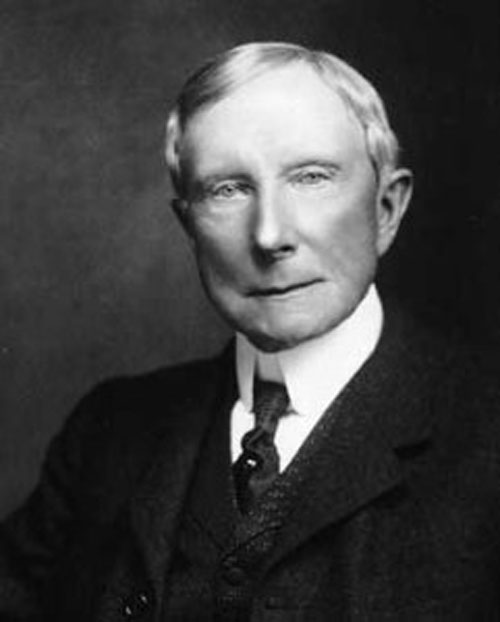
J.D. Rockefeller, Founder of the National Education Association said, “I don’t want a nation of thinkers, I want a nation of workers.”
Contact your representatives, and demand they abolish the Federal Reserve Act of 1913, and the fractional reserve debt based economic system that has destroyed the American dream.
House of Representatives.
U.S. Senators.
|




